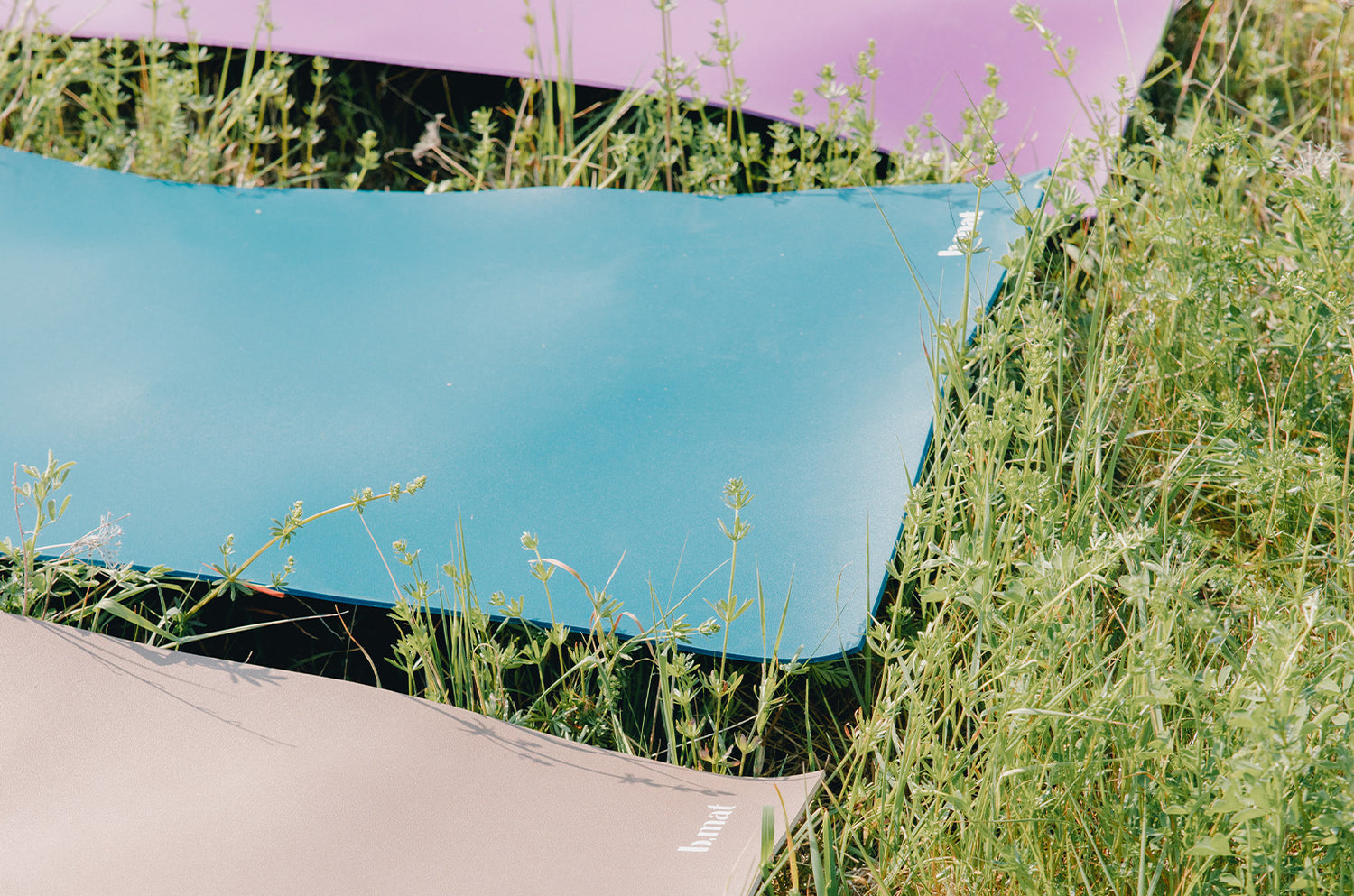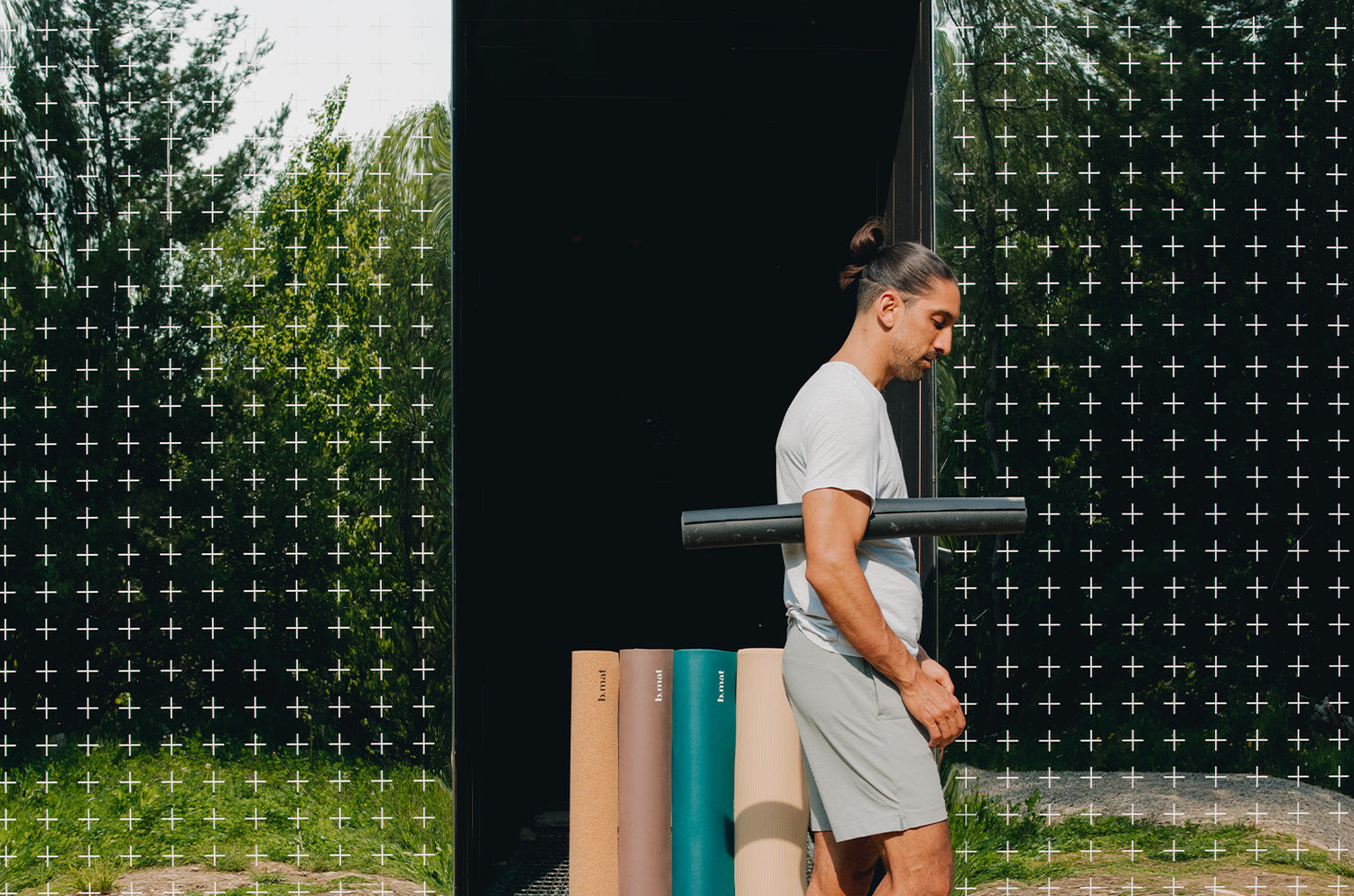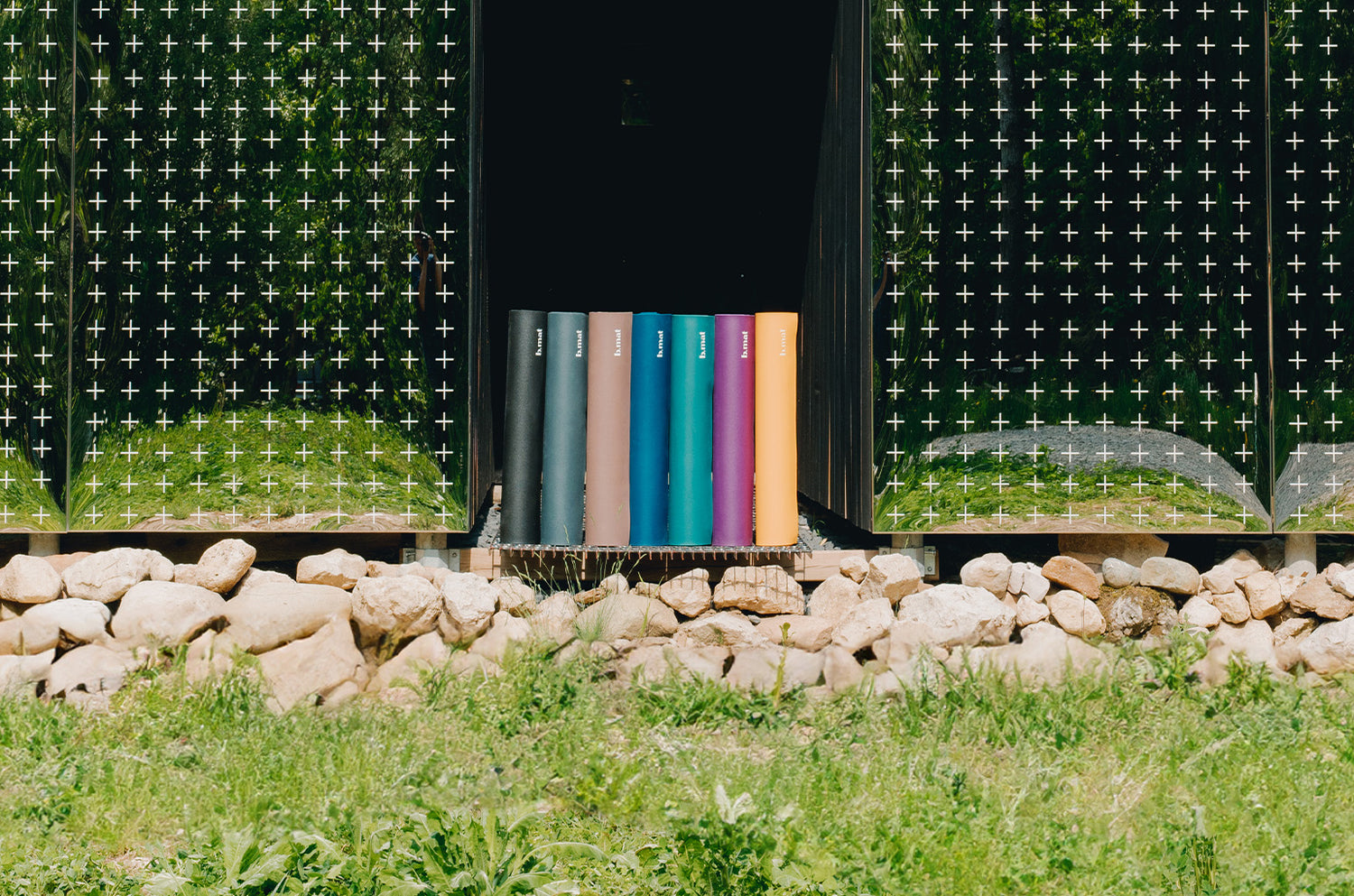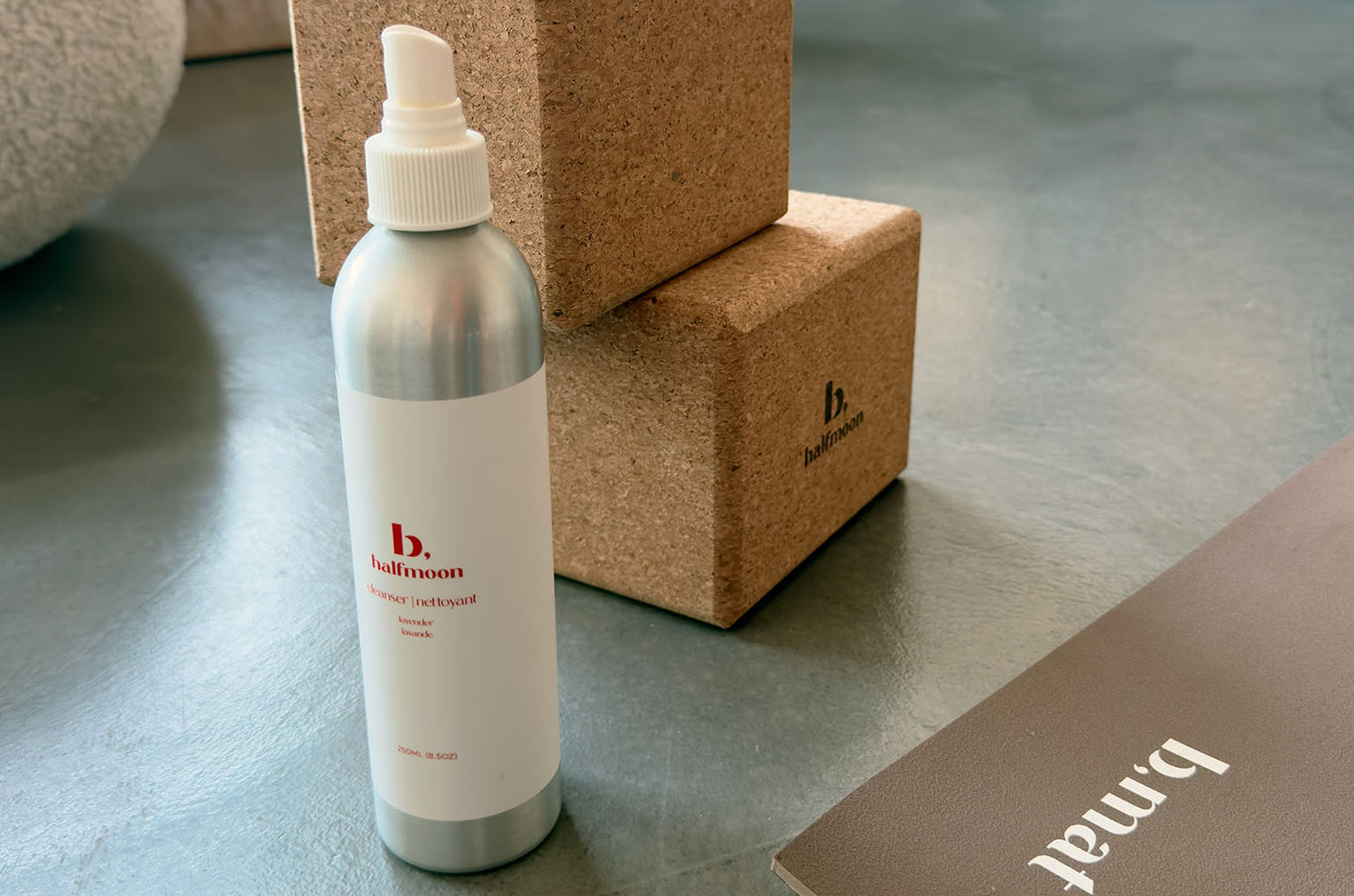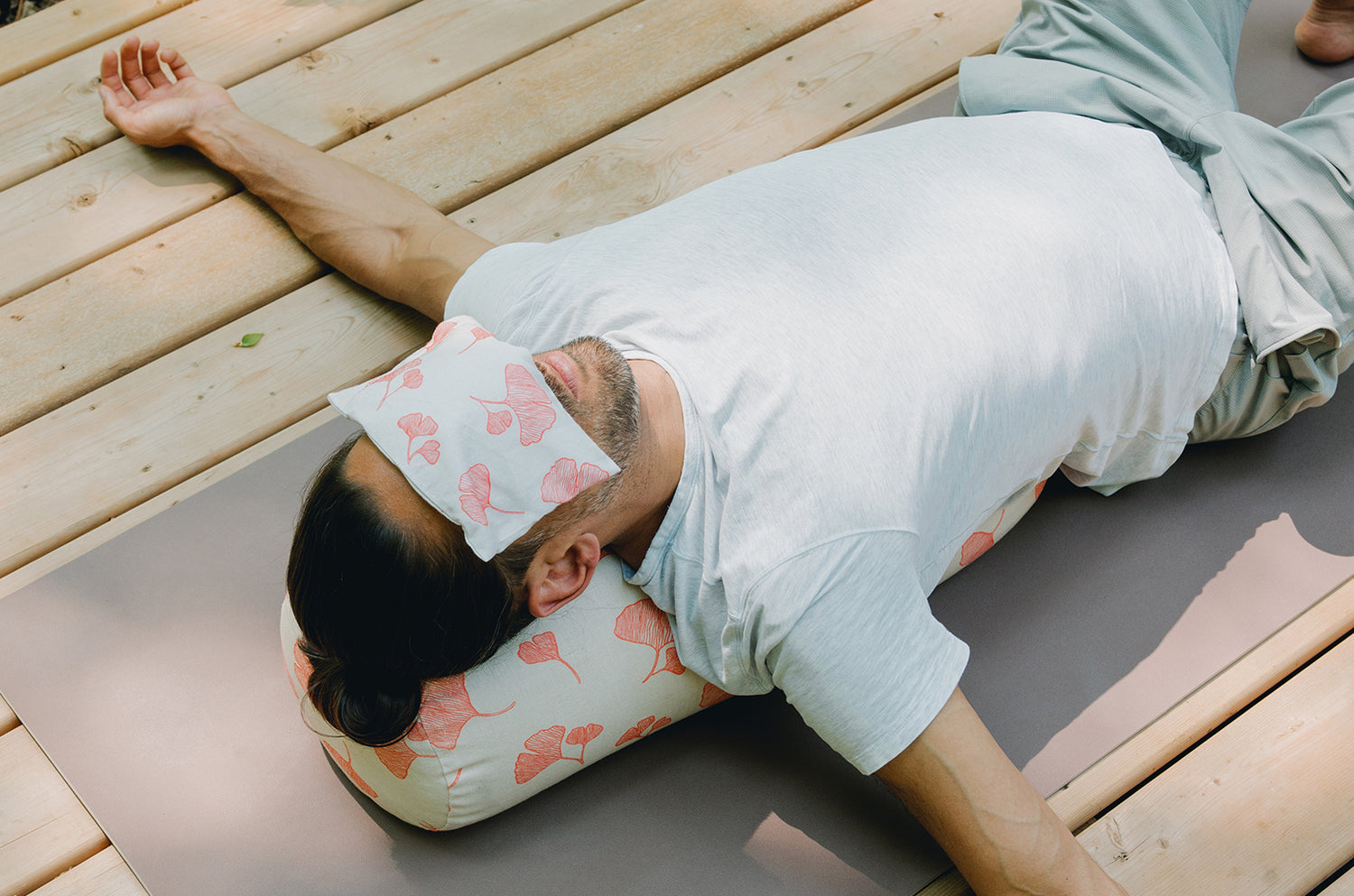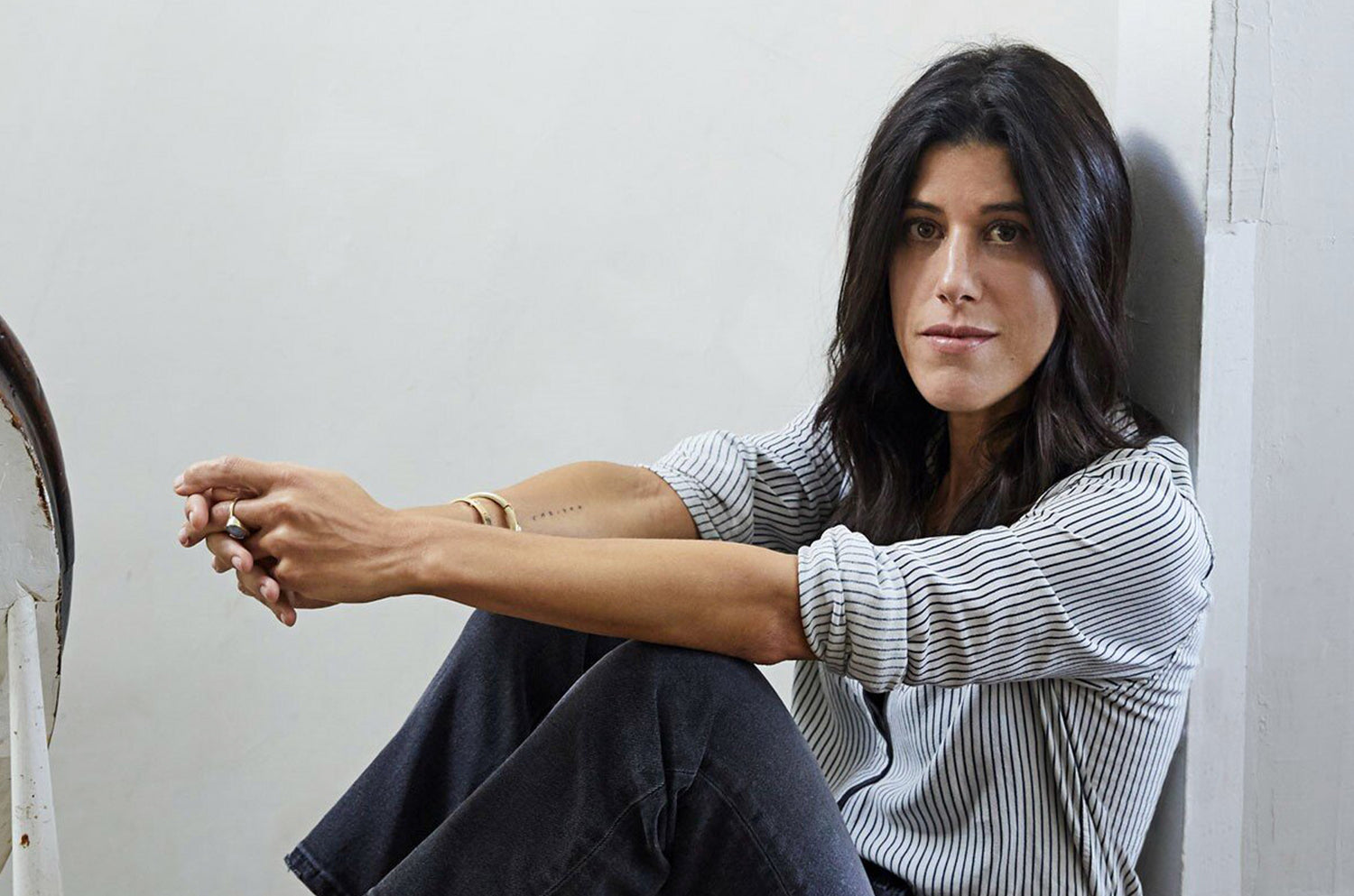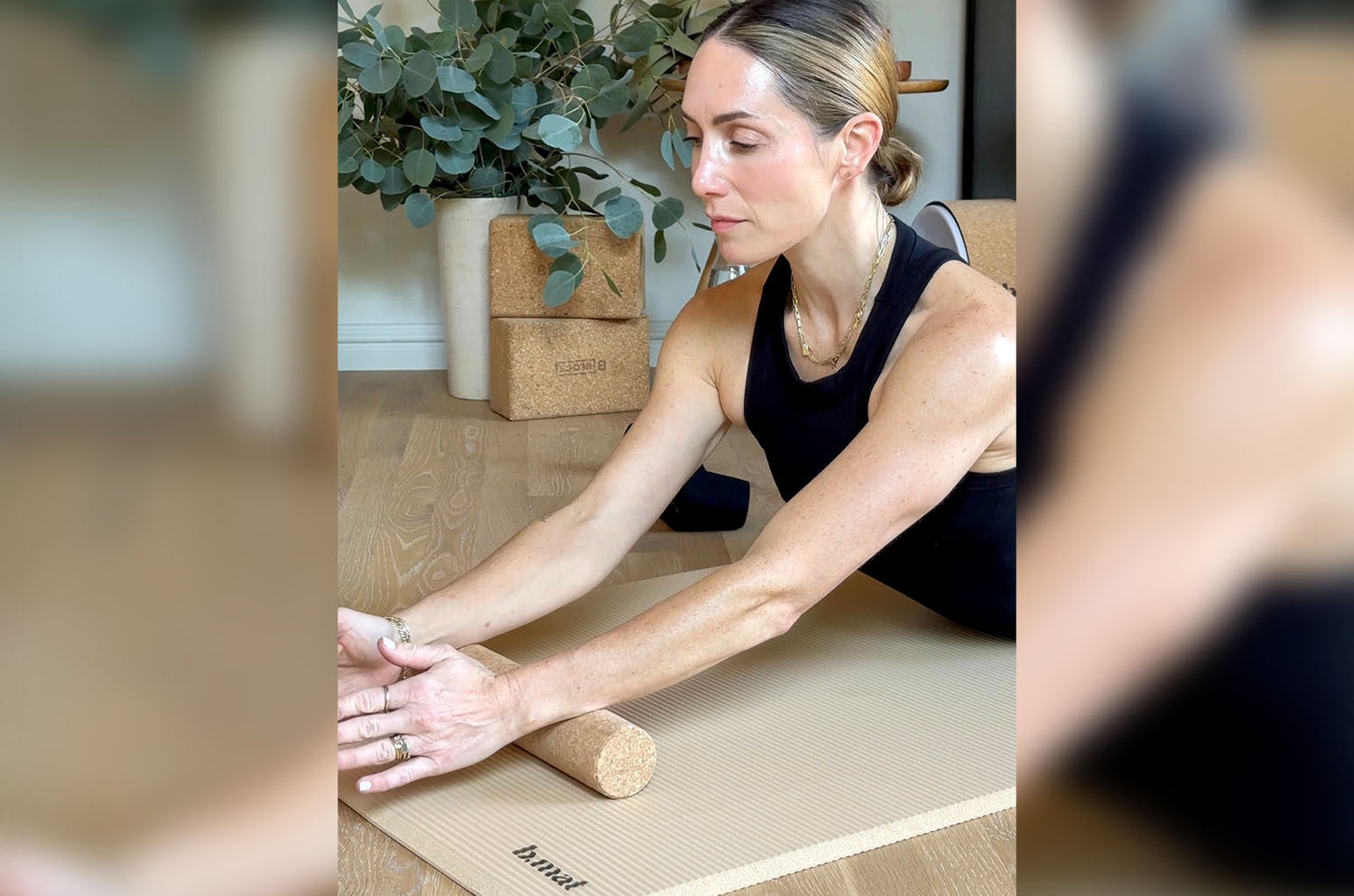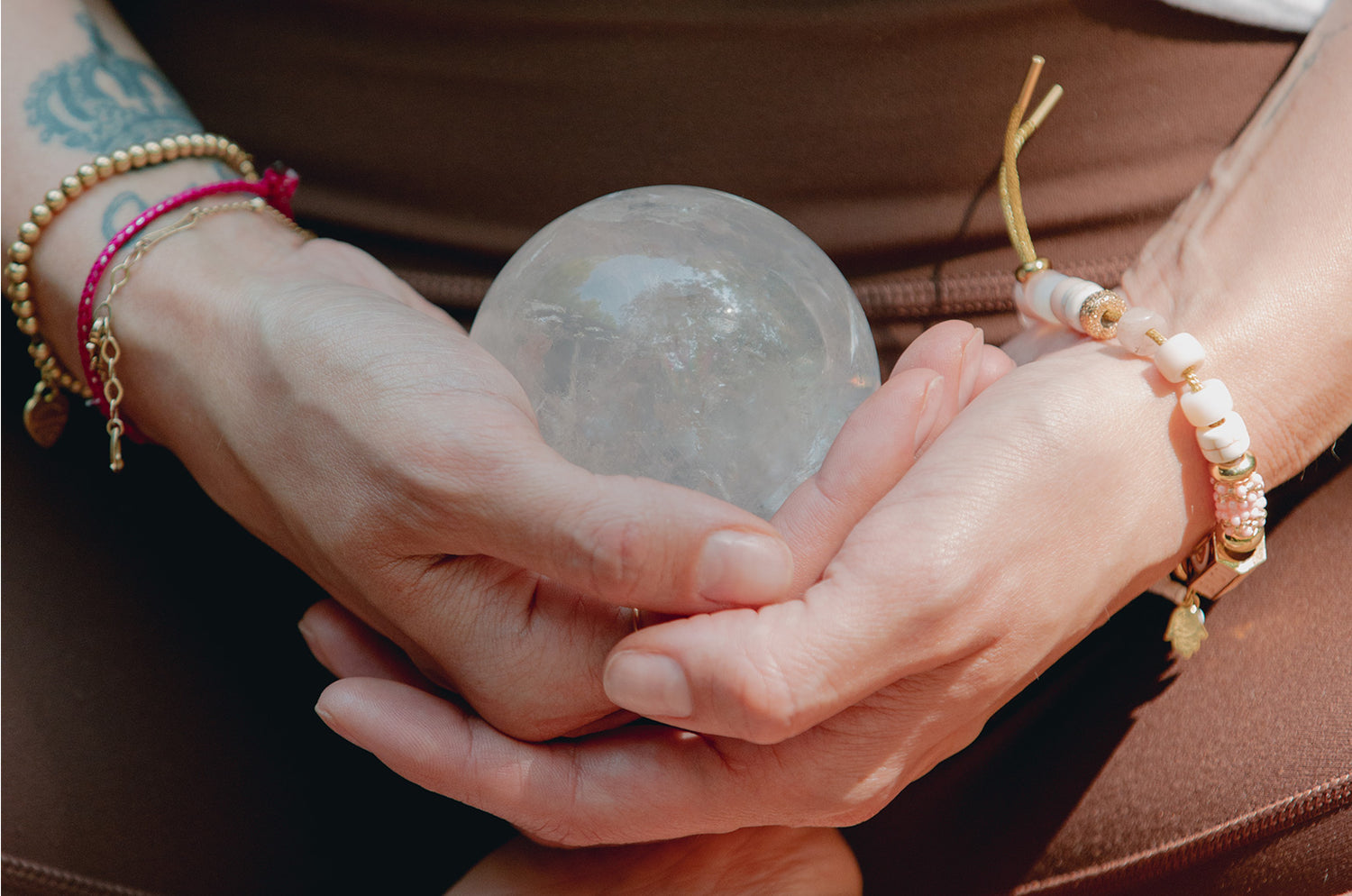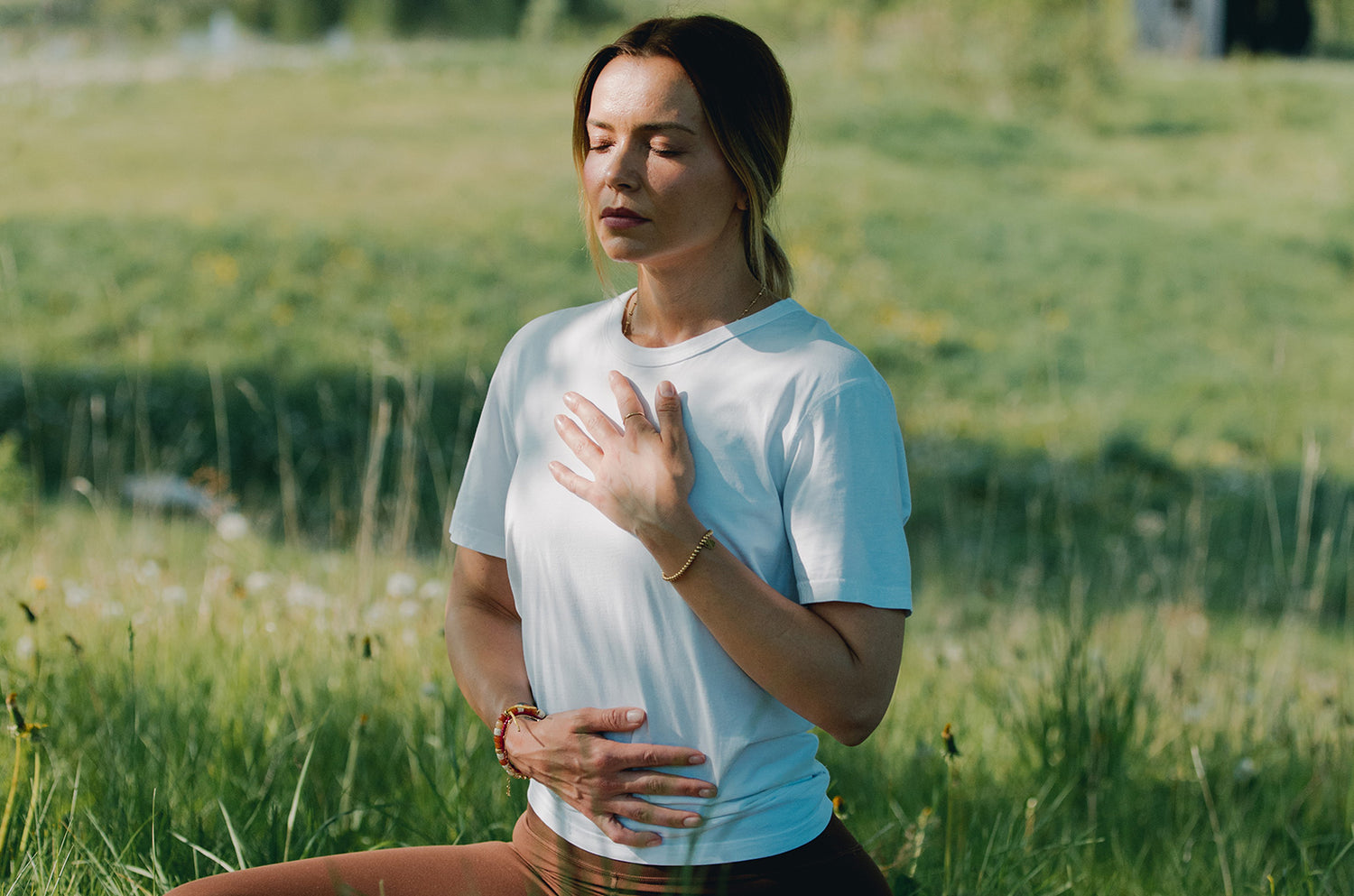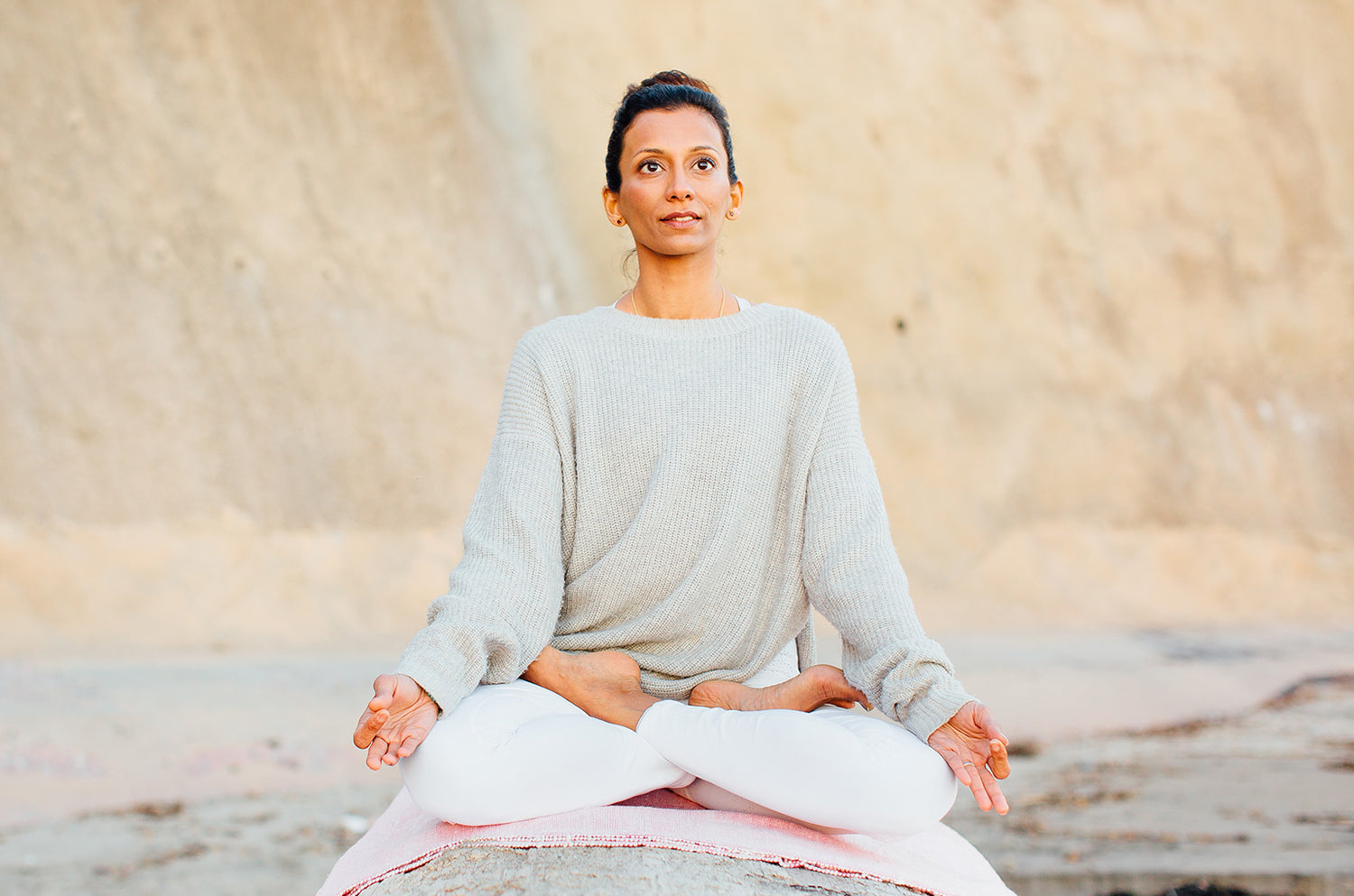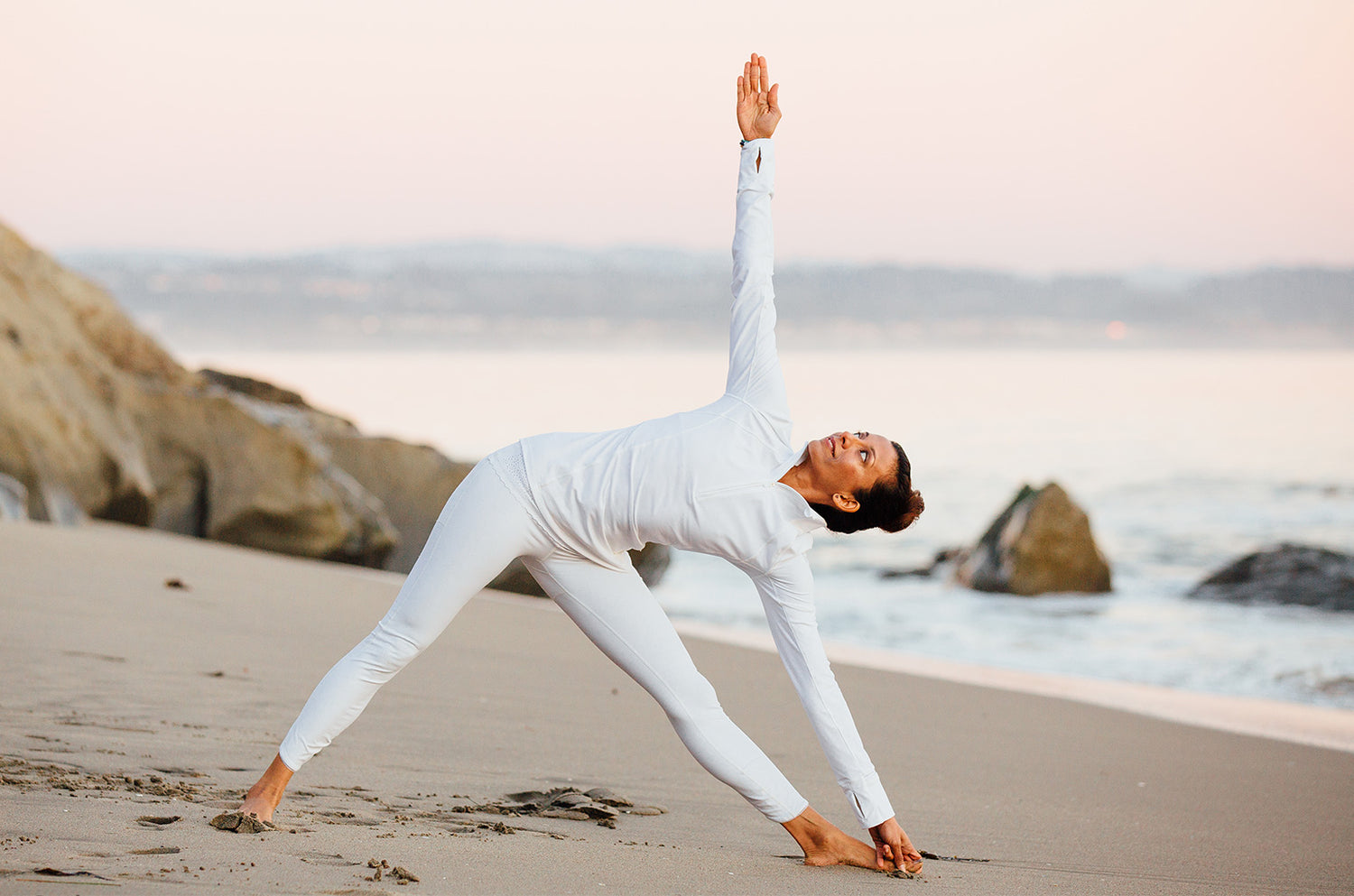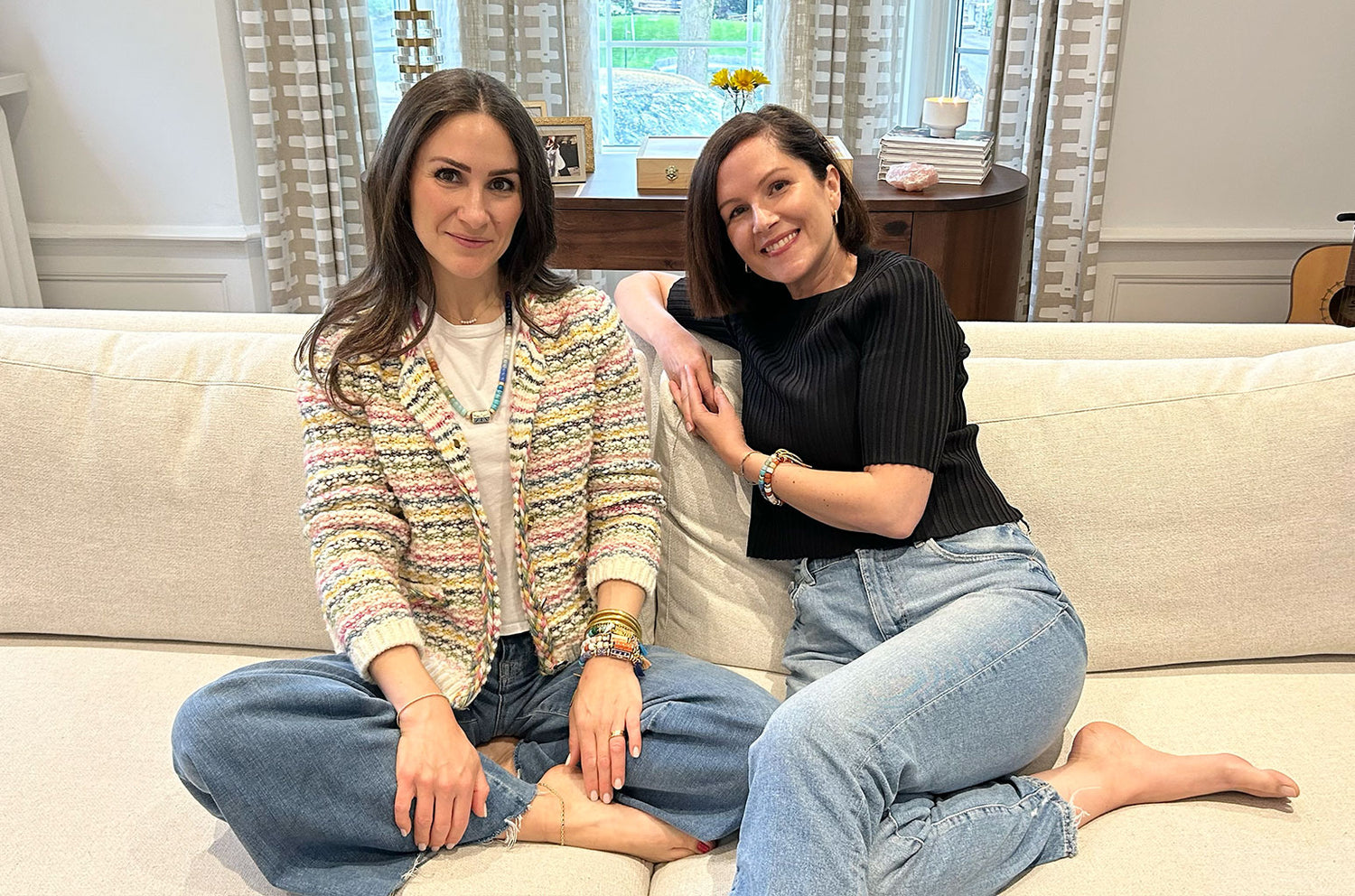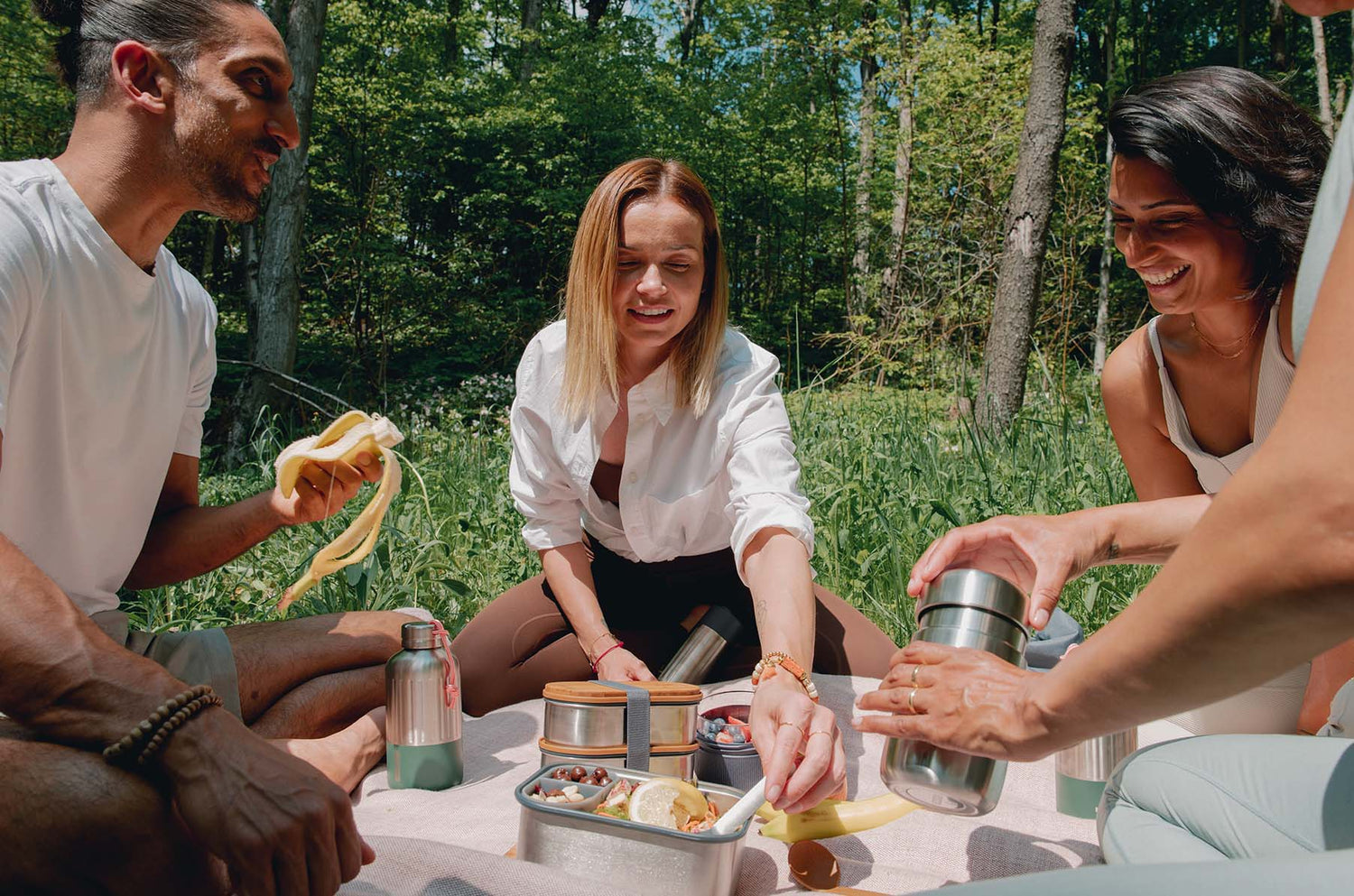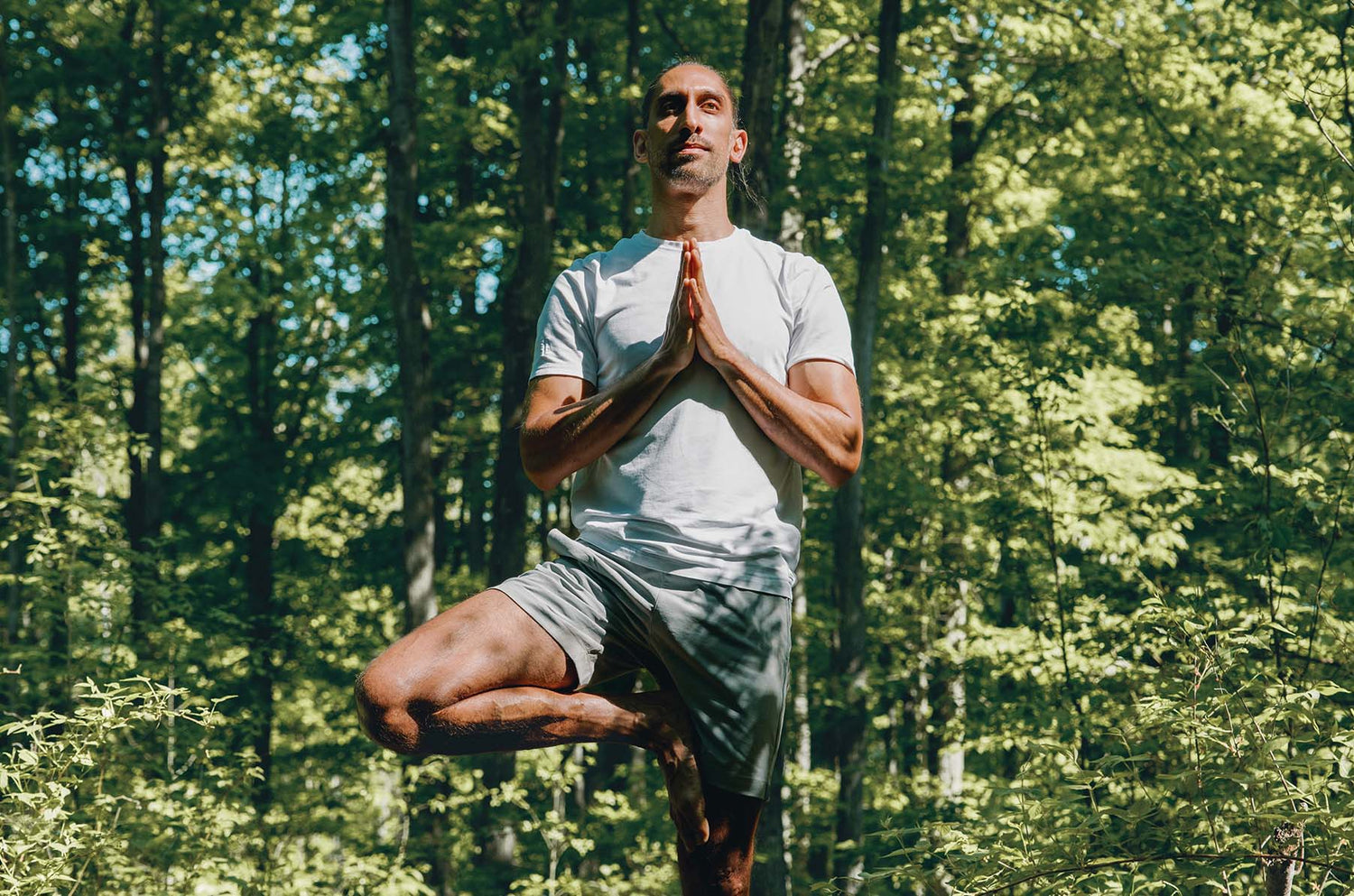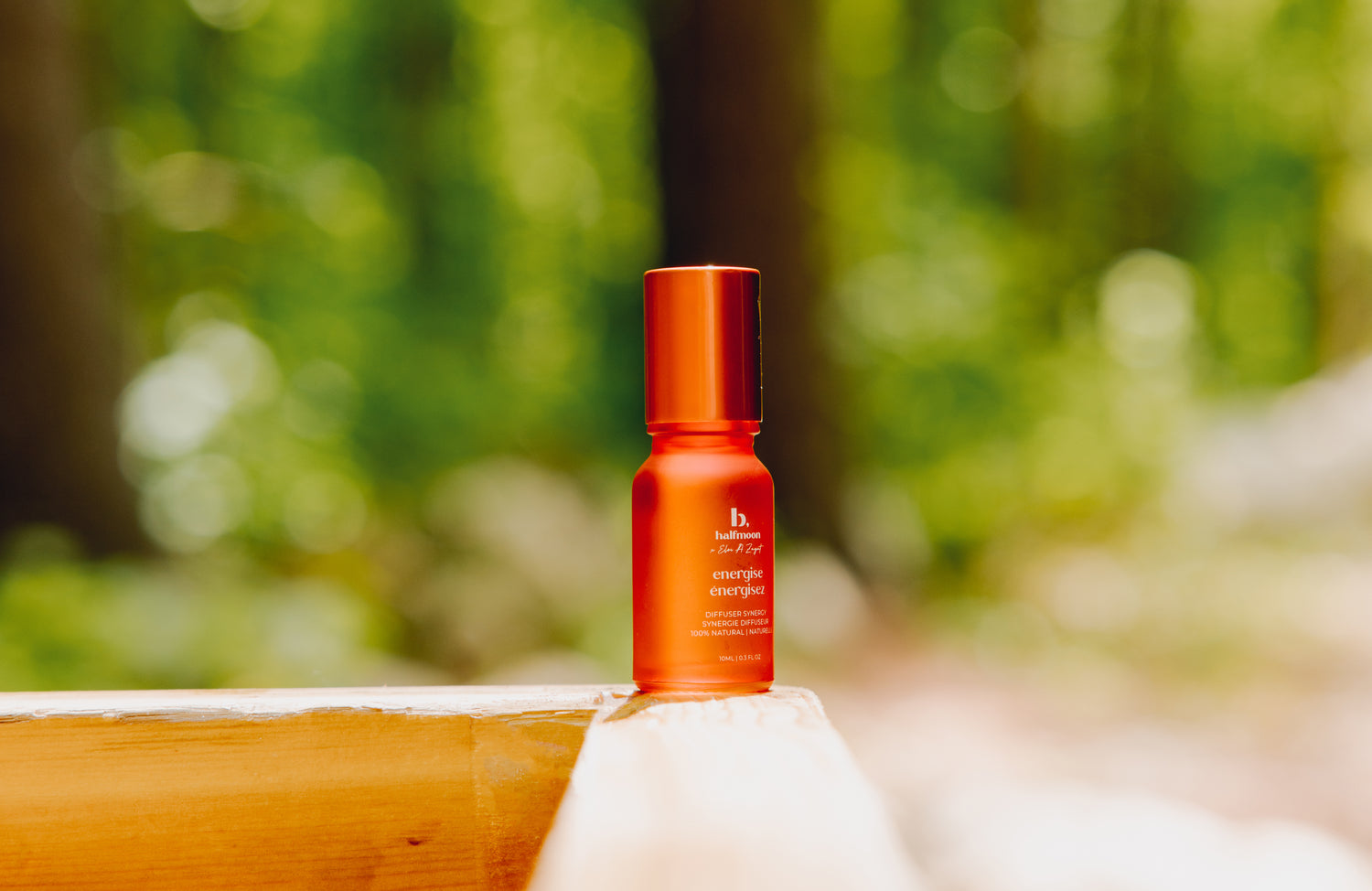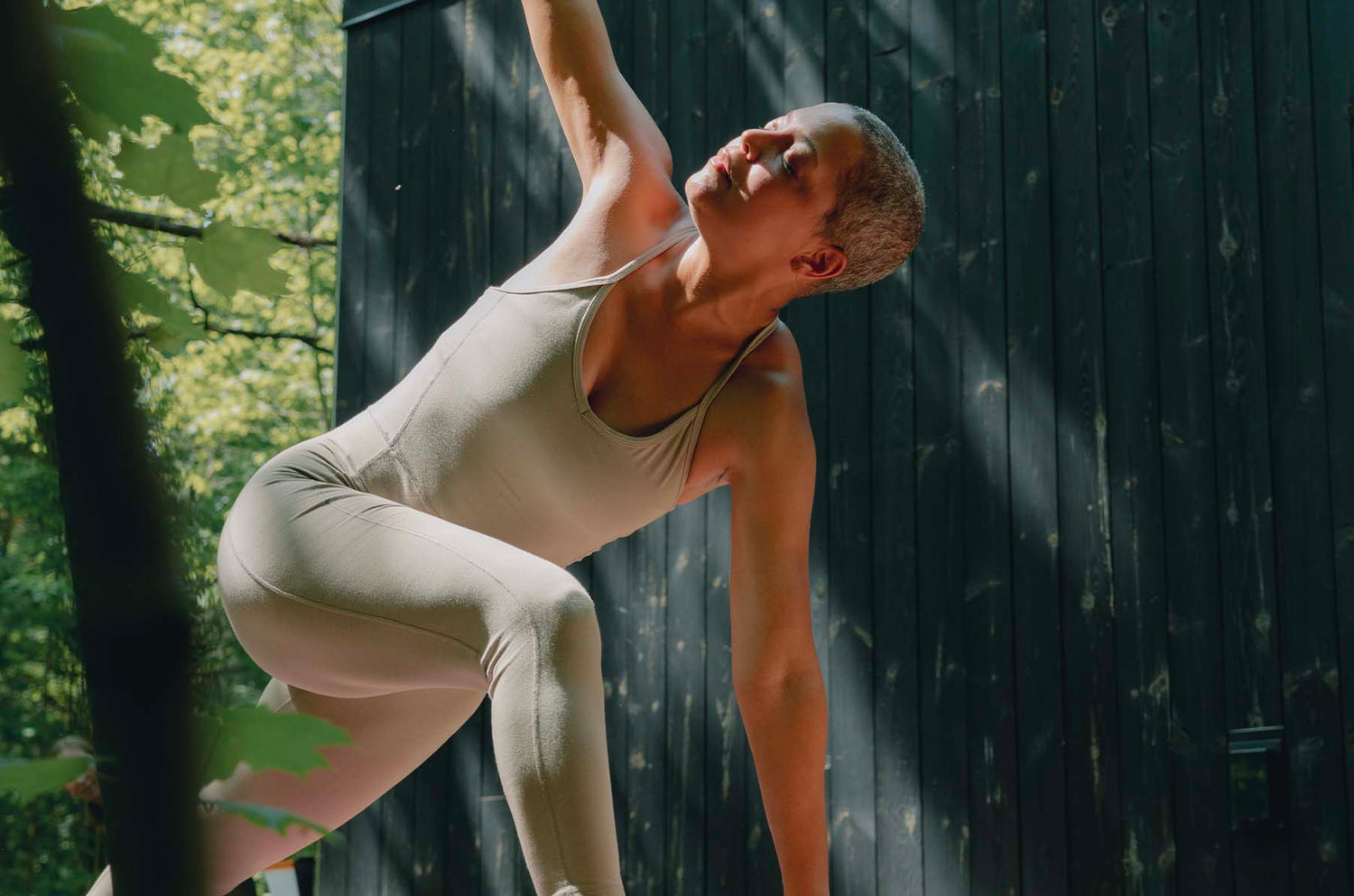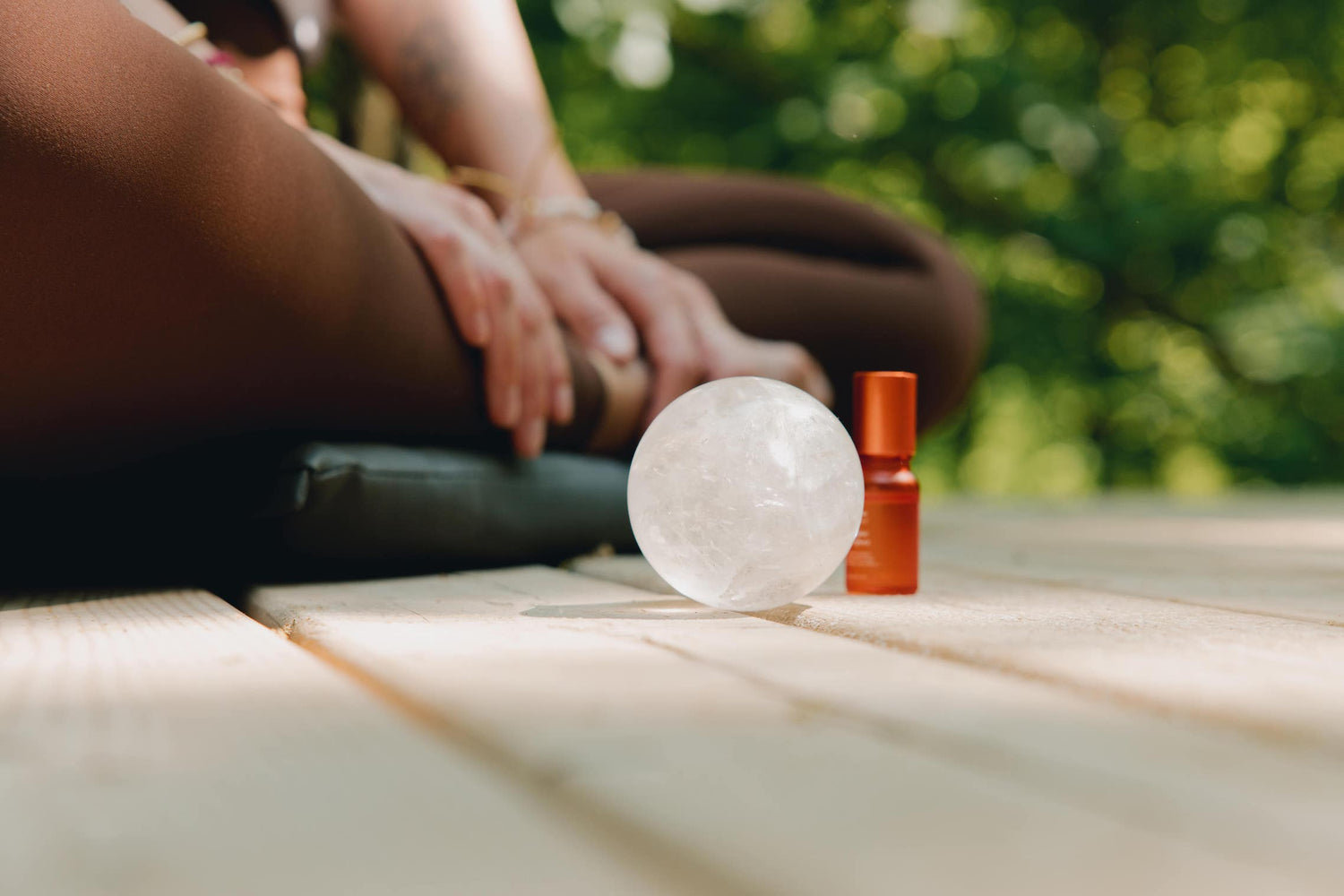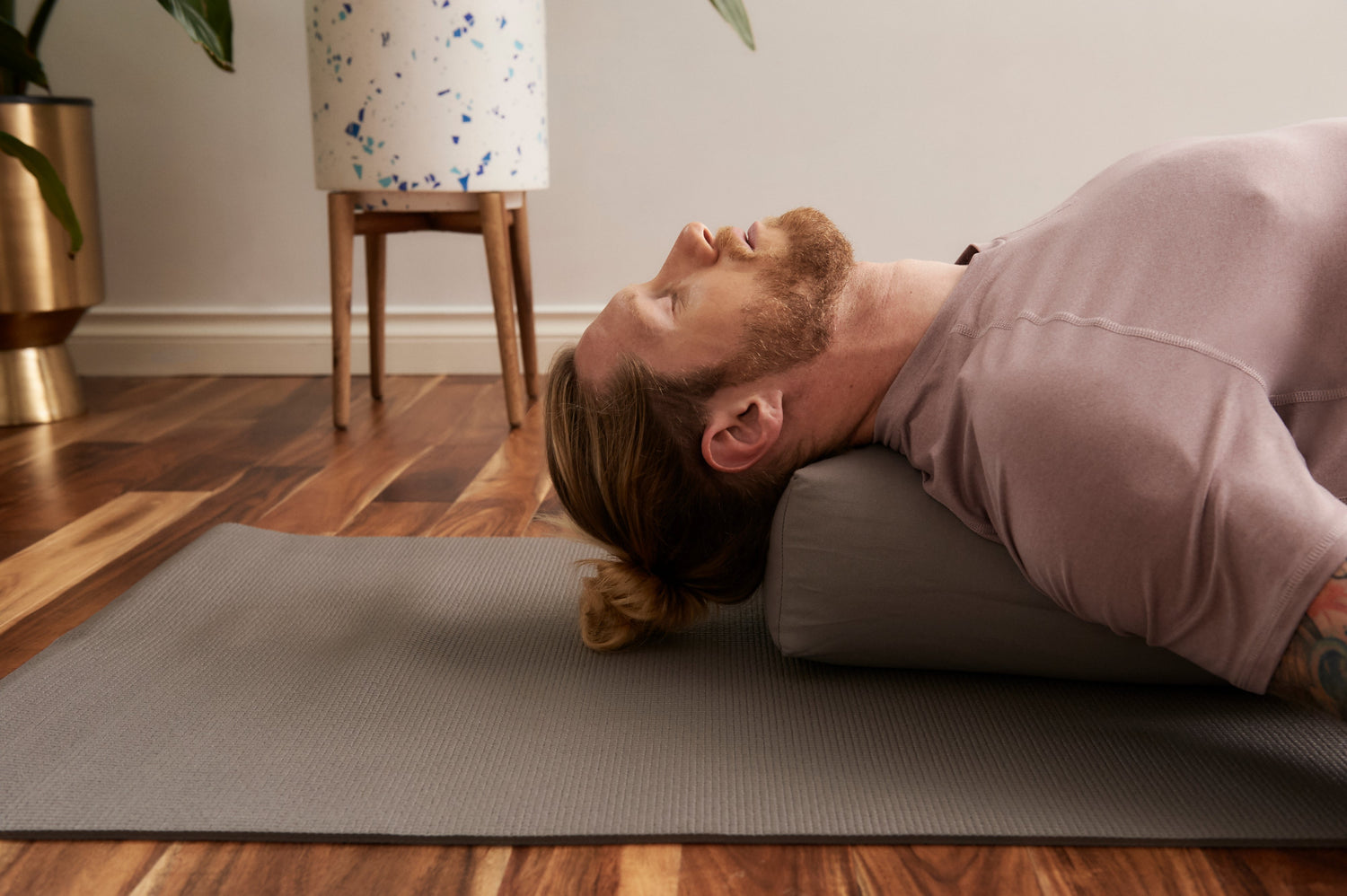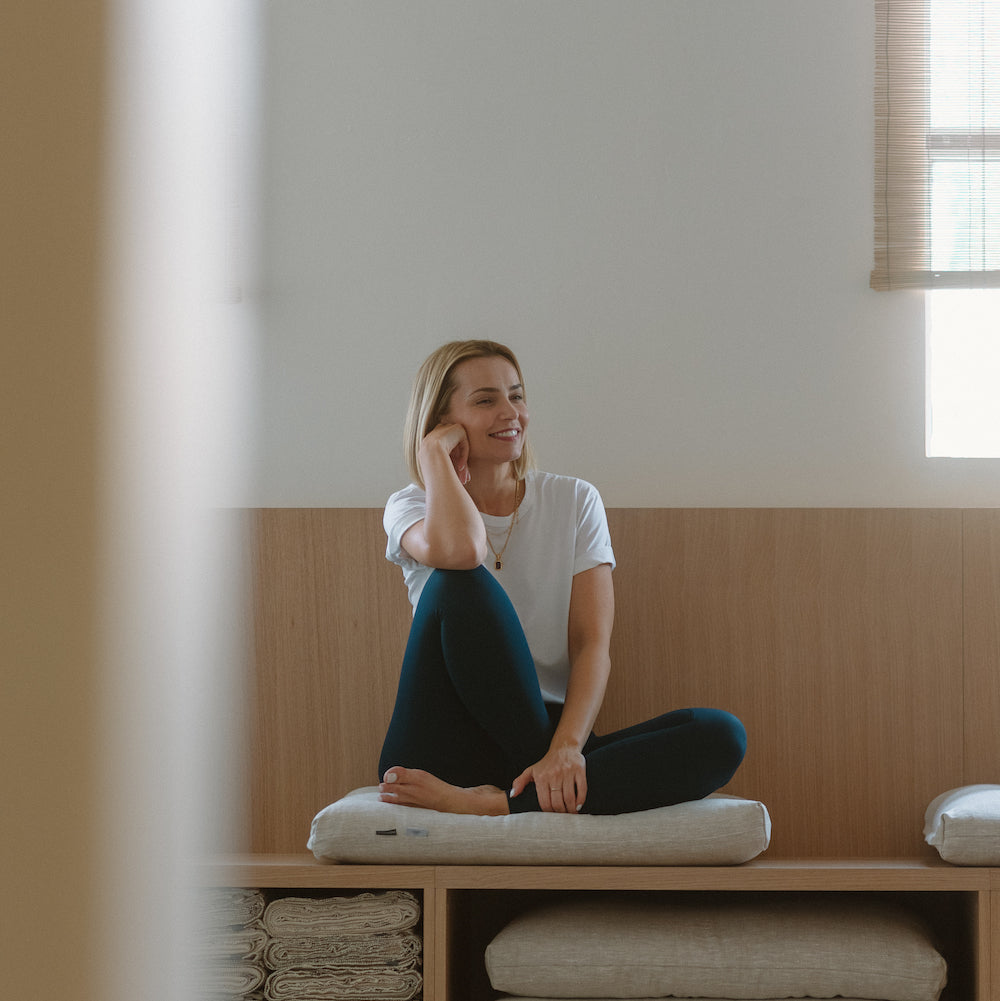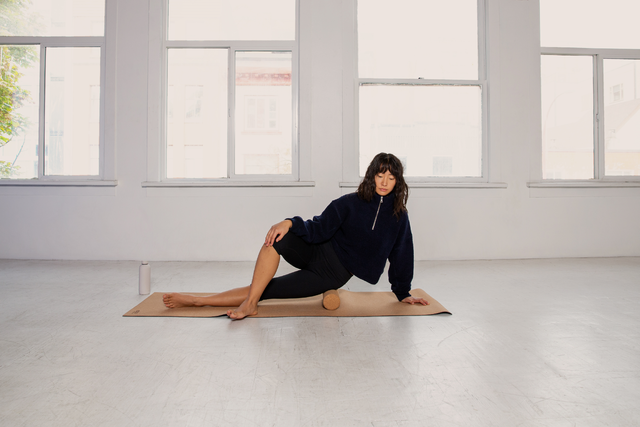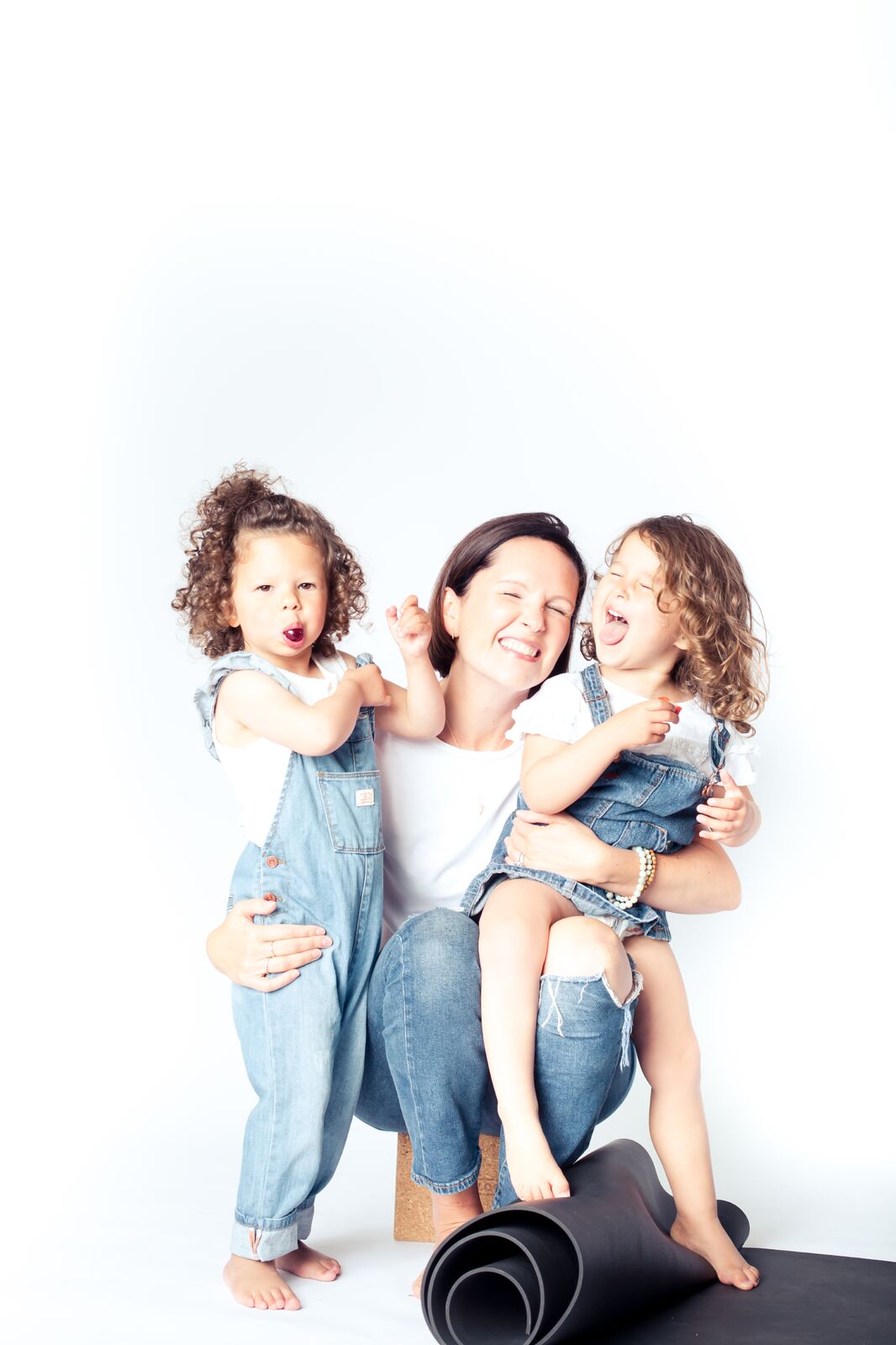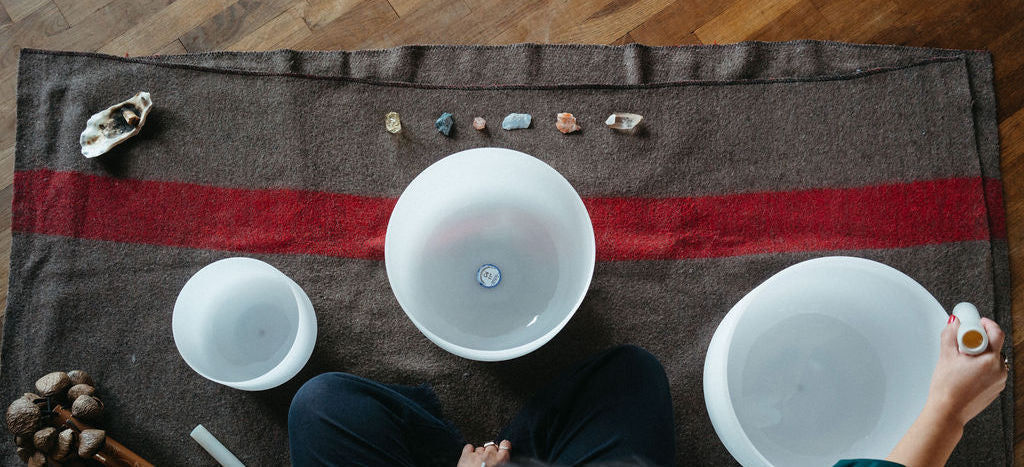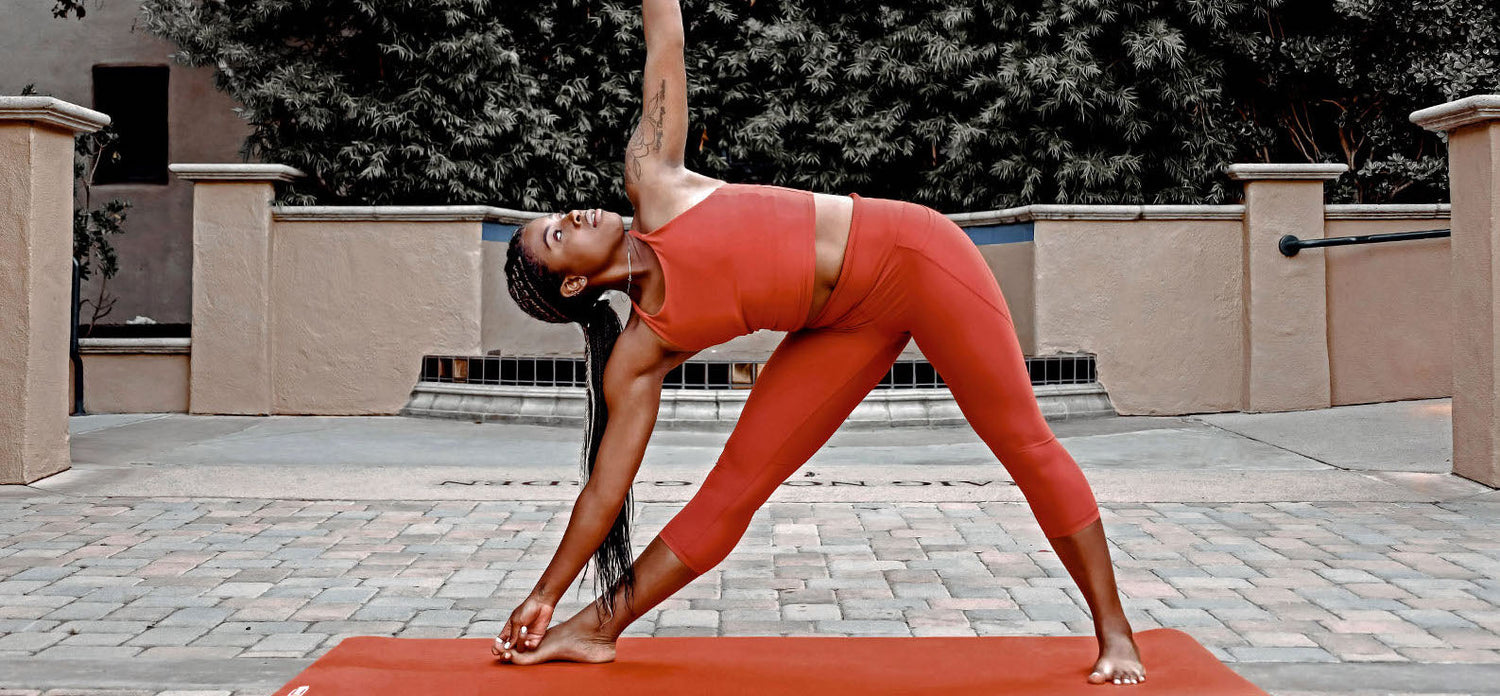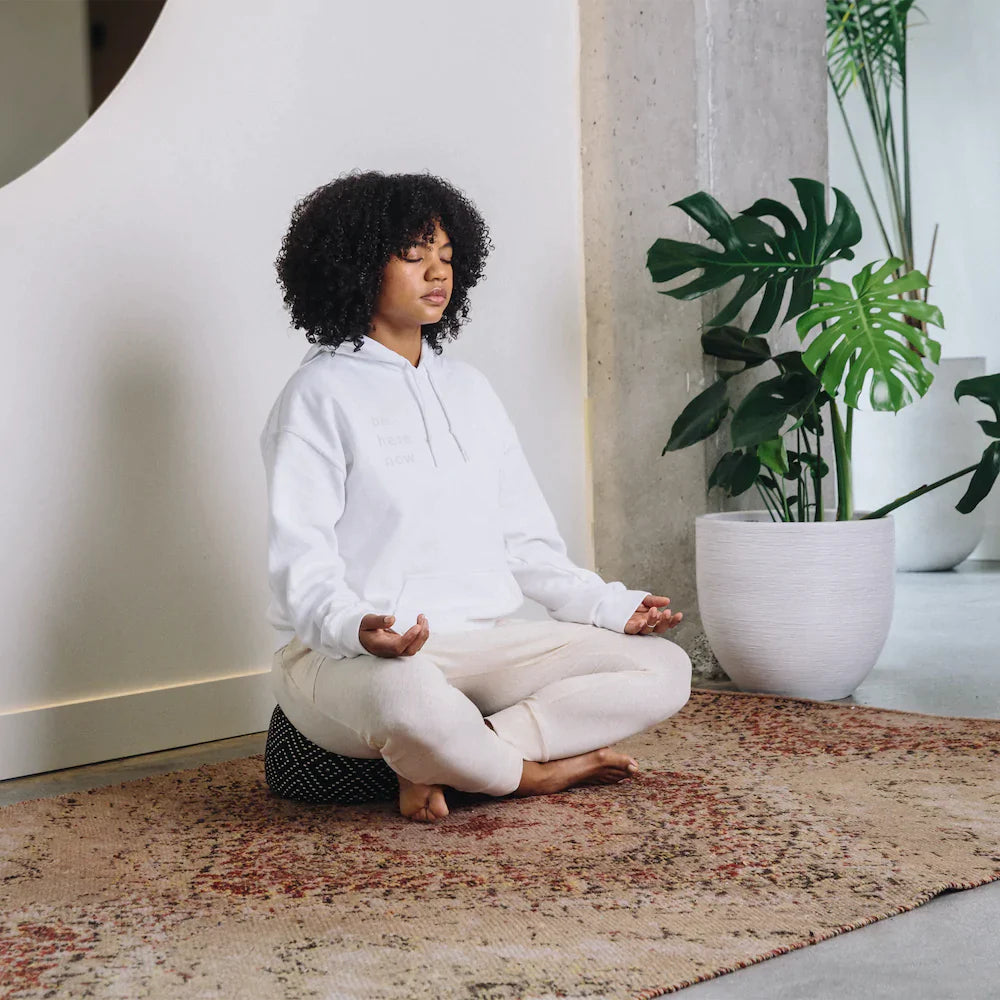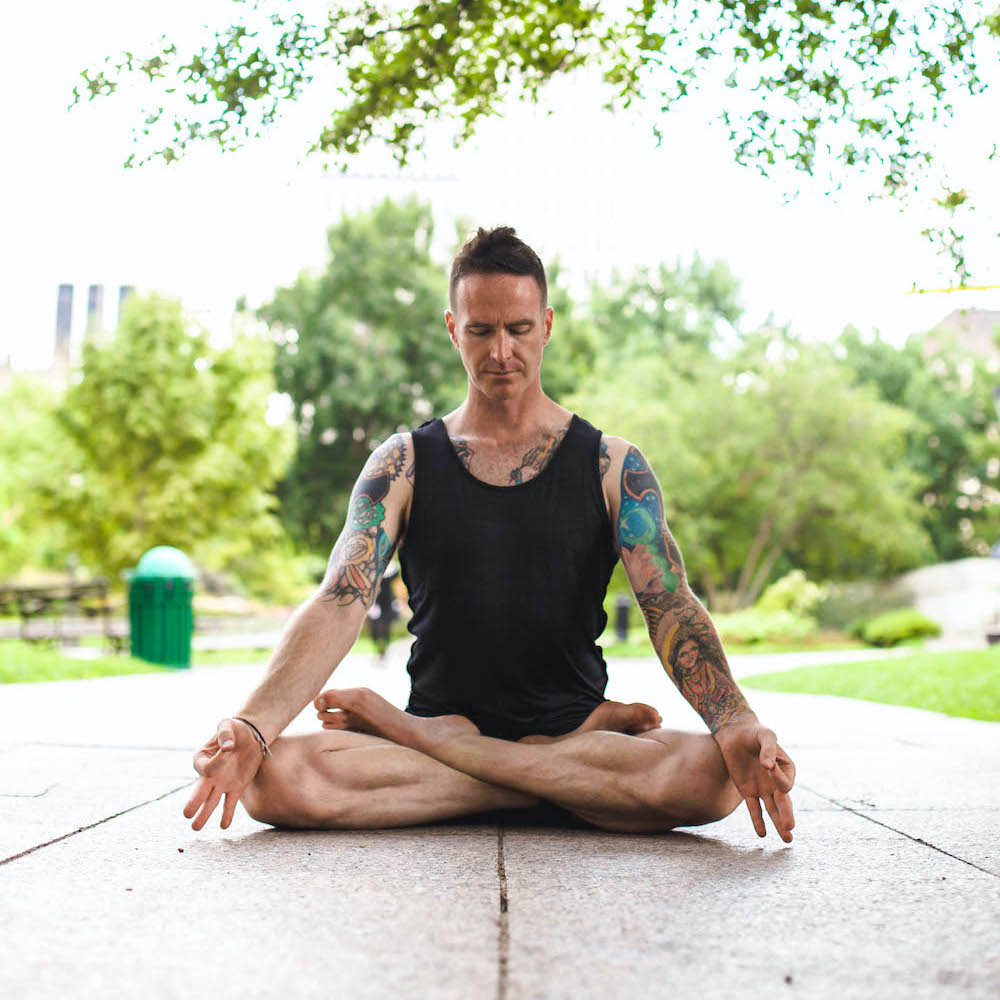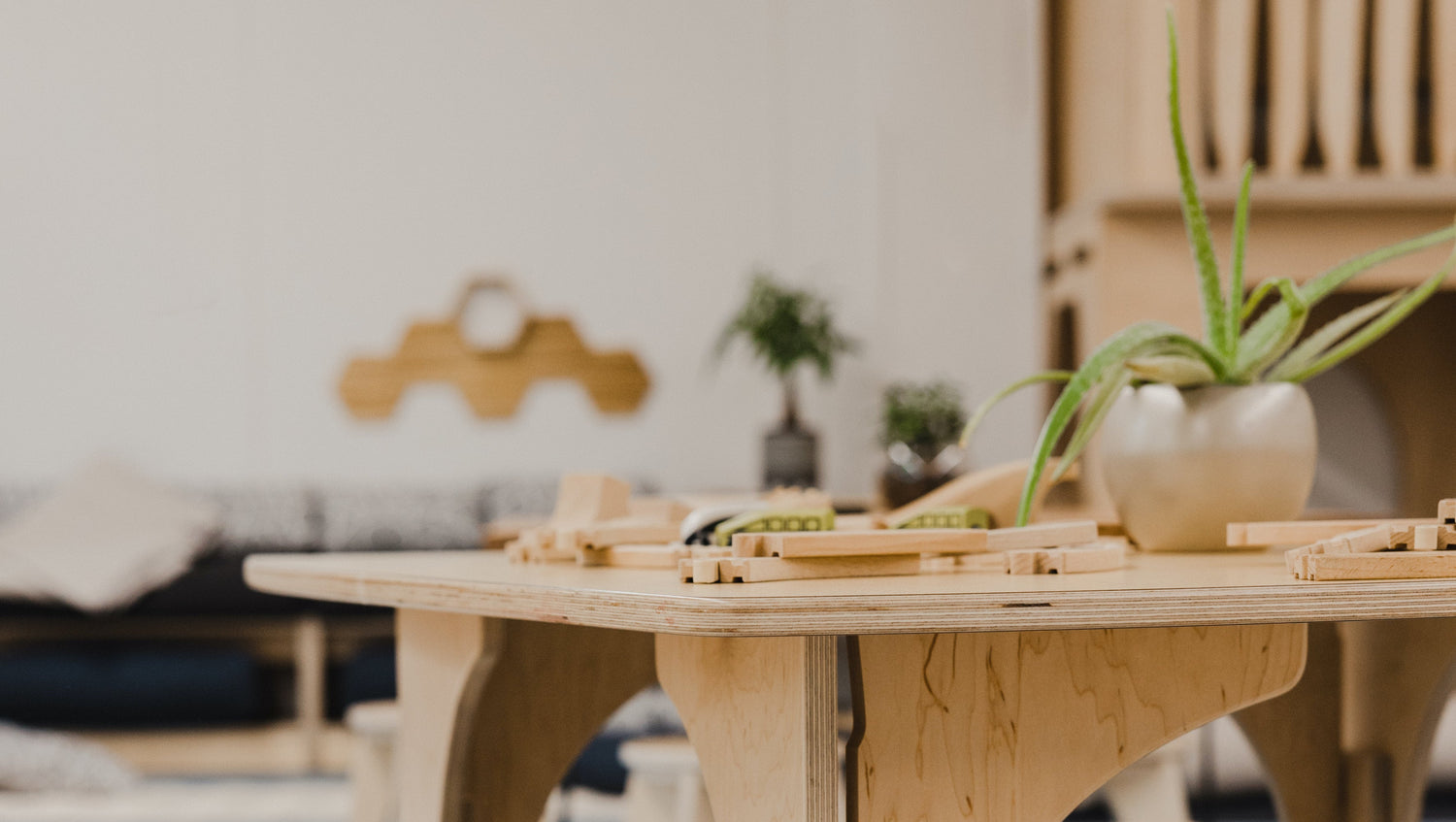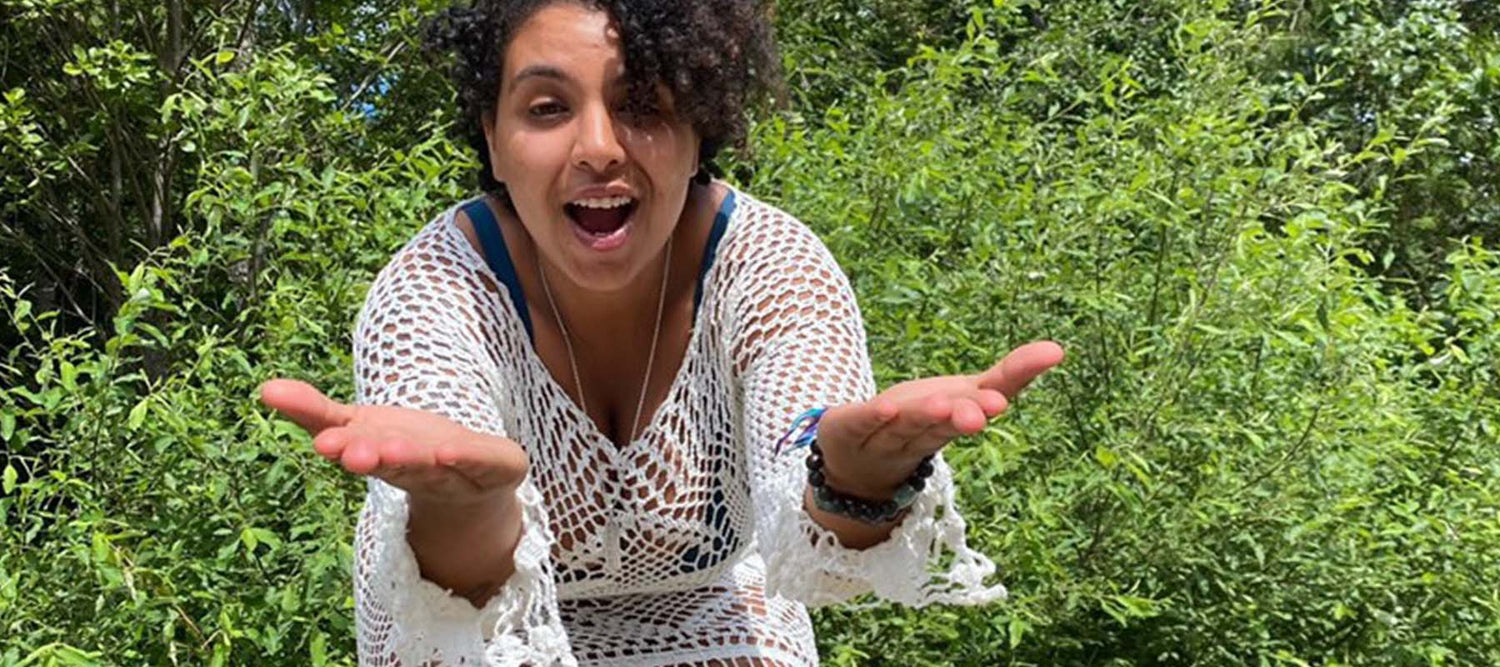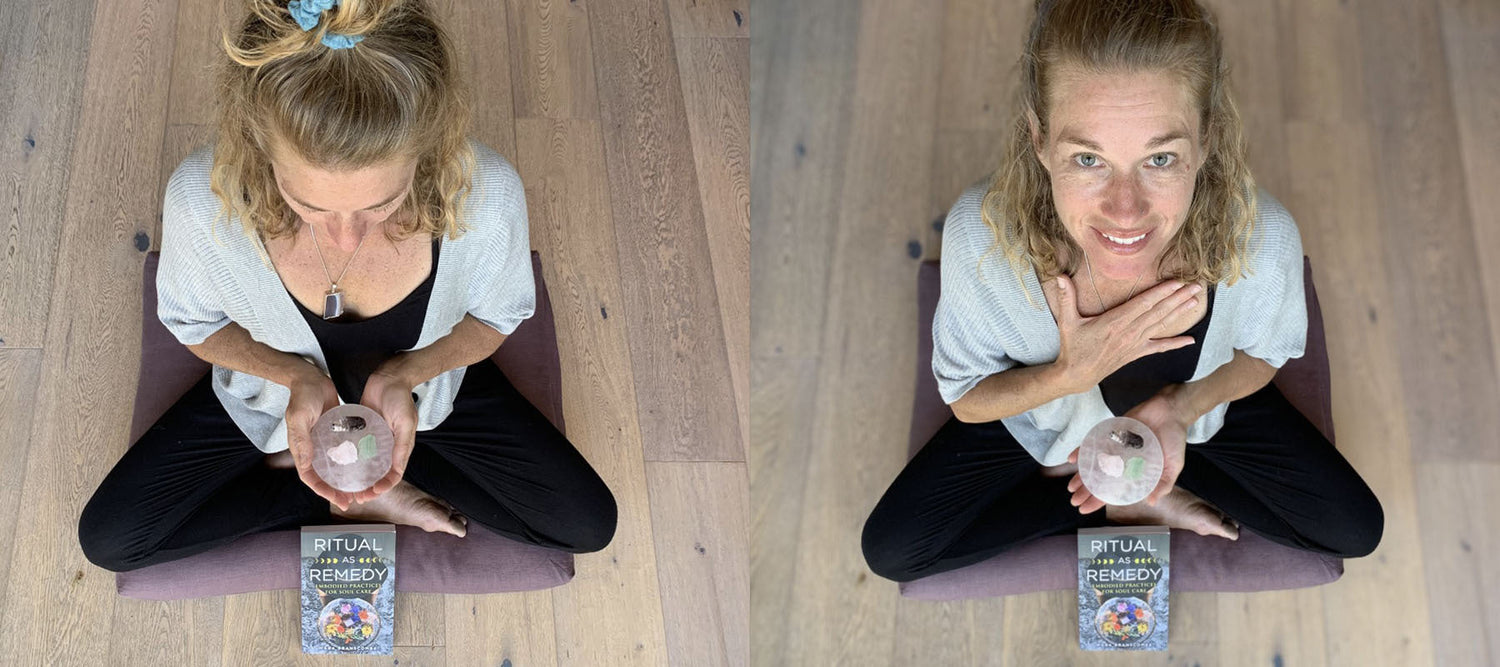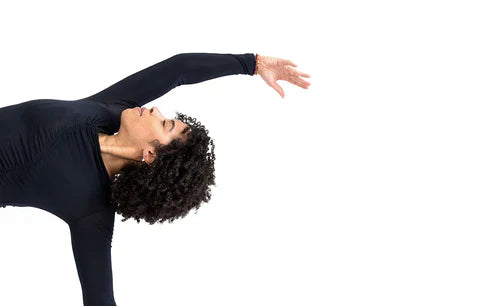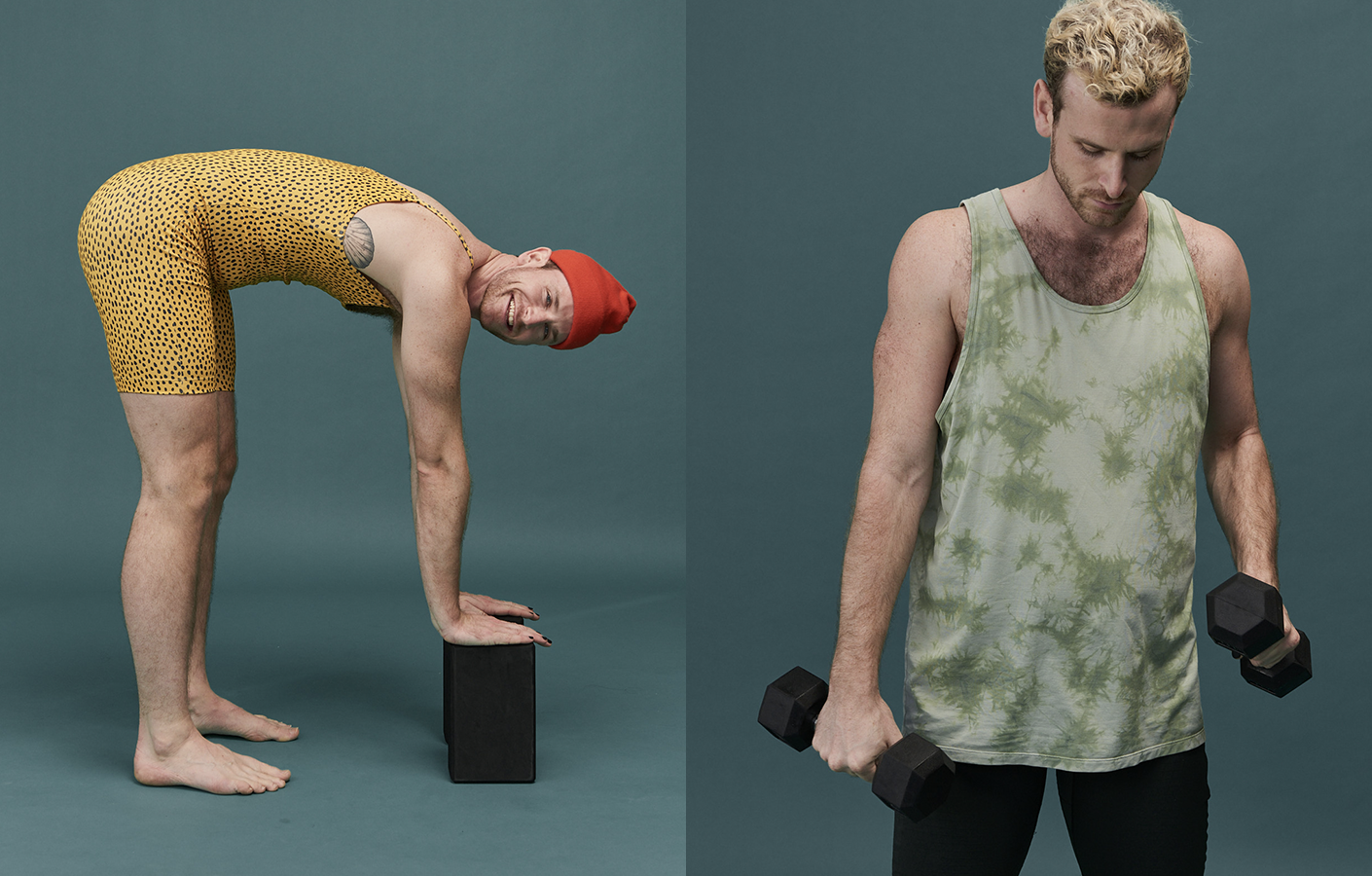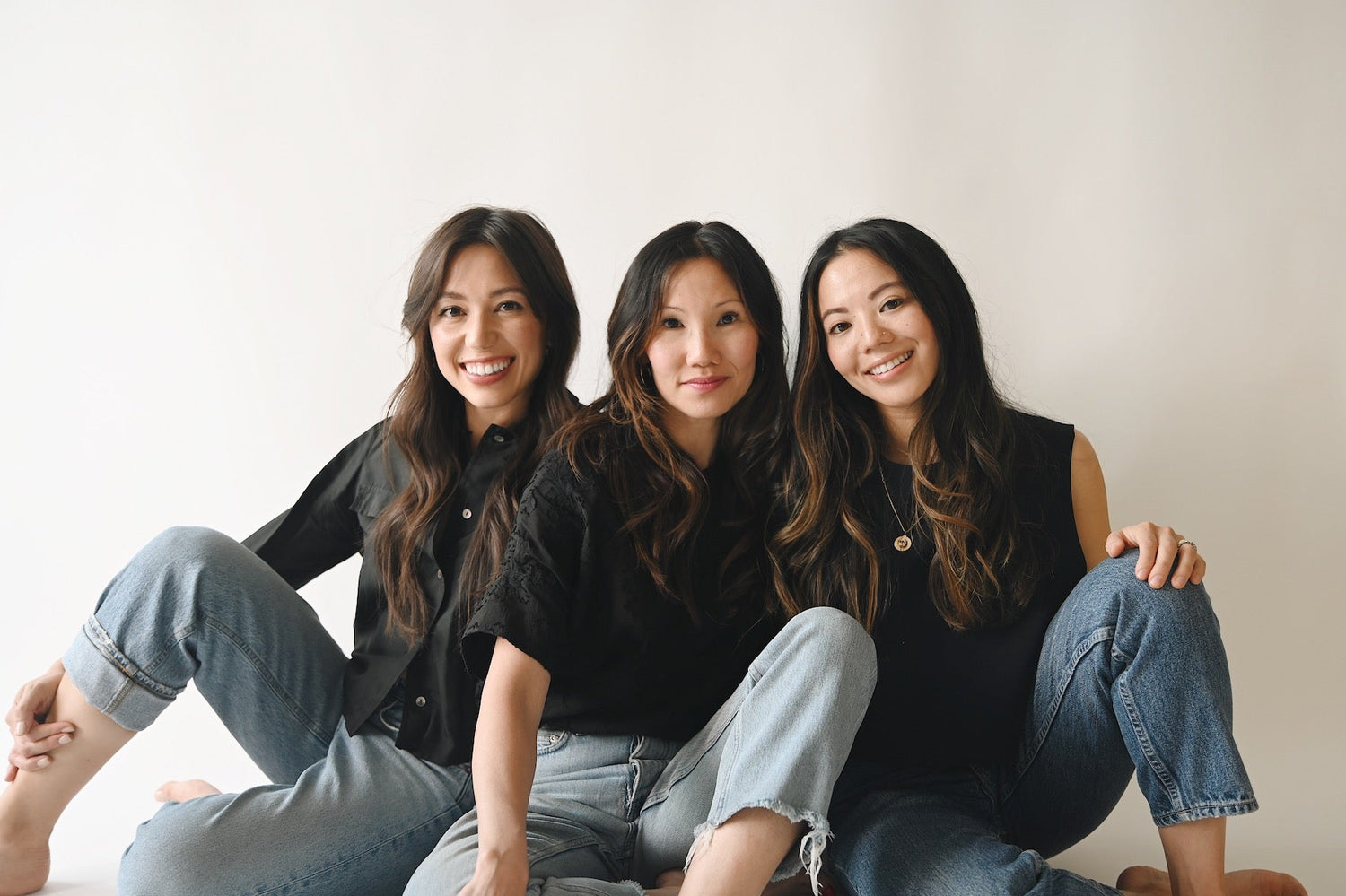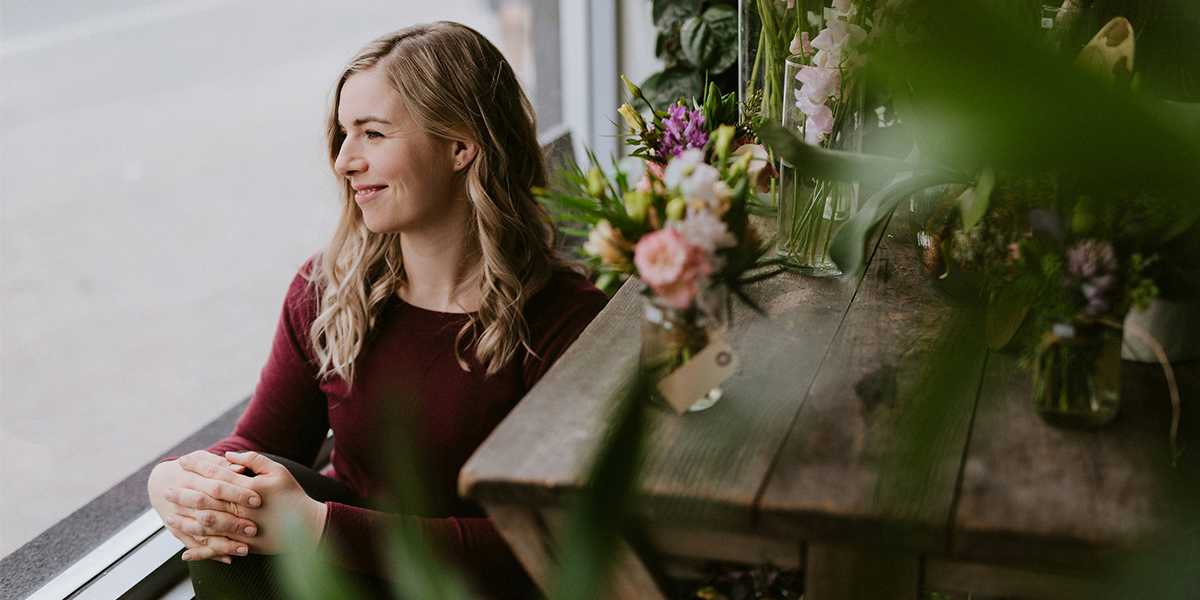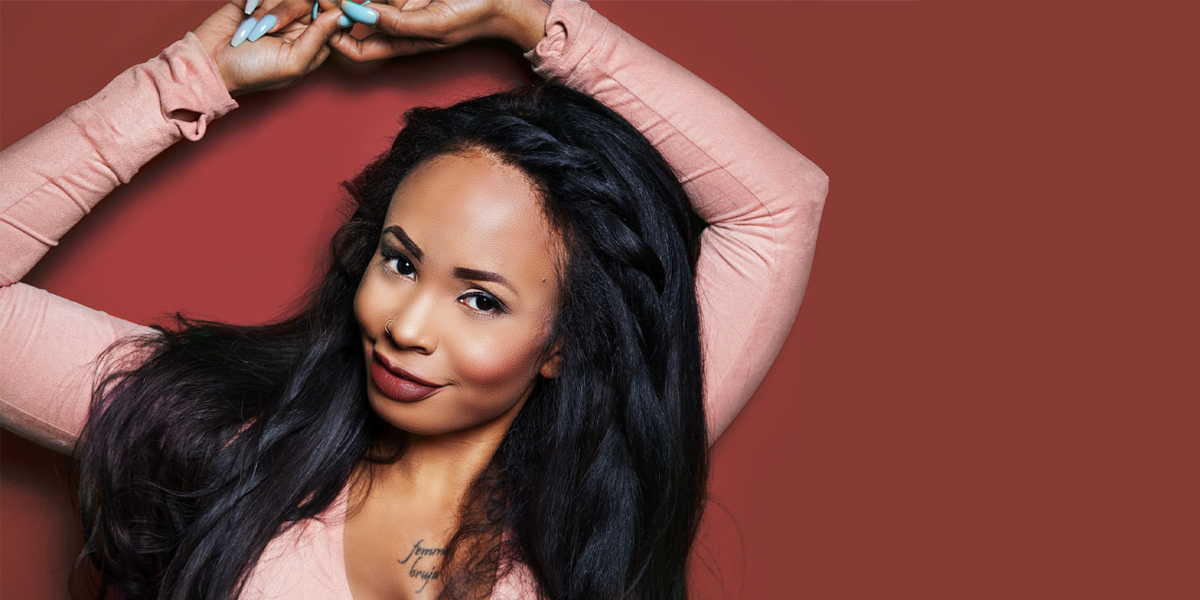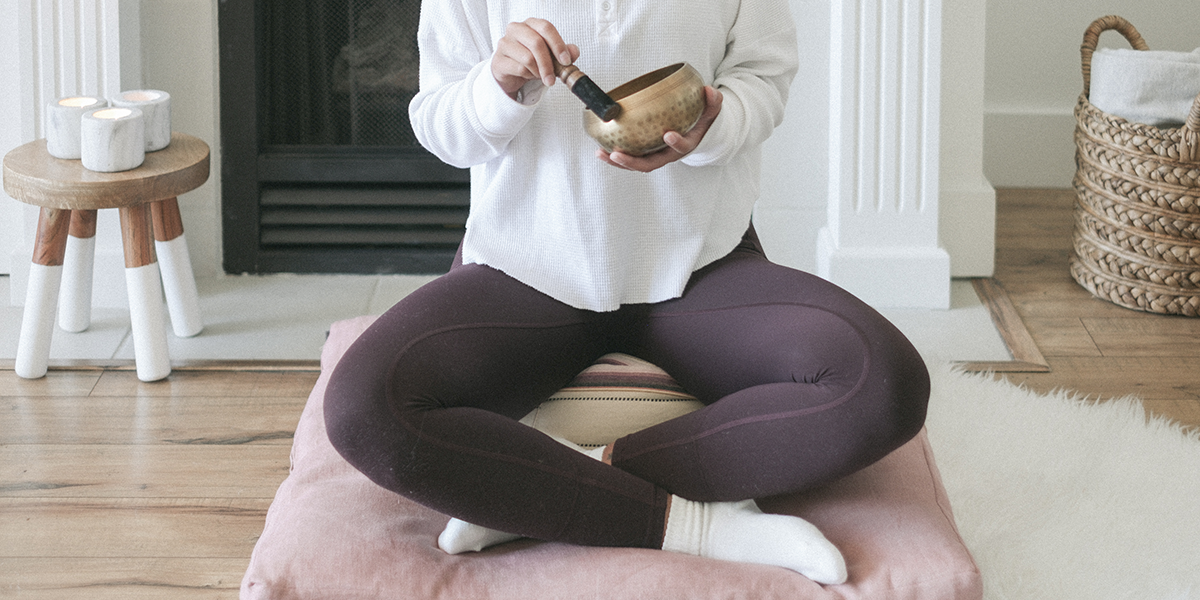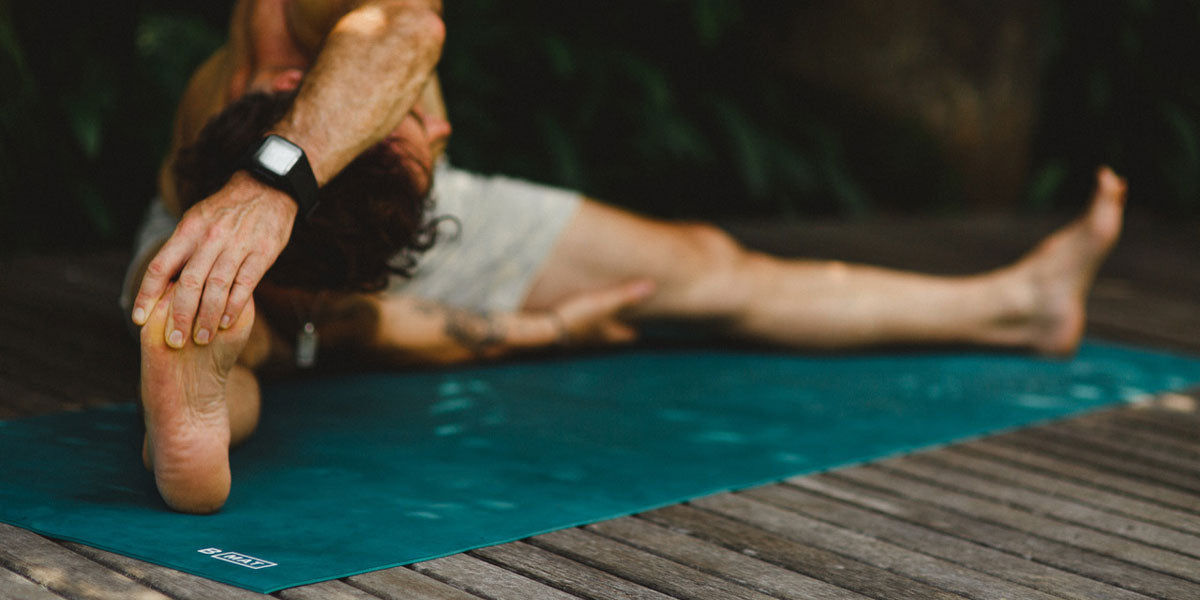There are countless ways that props can support your at home yoga practice. From your very first day on your mat to decades of dedicated practice, each yoga prop can serve a multitude of purposes. However, there are always the essentials. Here are a few suggestions to get you started.
A Yoga Mat
First and foremost, you’ll need a yoga mat. Your own little sanctuary that will travel with you everywhere. My top pick for a yoga mat is the B MAT Everyday. I’ve tried dozens of different mats over the years, and this one stands out as my favourite. This mat offers the best grip of any mat I’ve ever owned, the perfect amount of cushioning, and it’s relatively light compared to other mats of the same thickness. Plus, it comes in a variety of beautiful colours!
The B MAT also comes in travel form, and is the one I recommend to all of my yoga retreat guests. It’s light, easy to pack and has the same superior grip as the Everyday version.
Blocks
A set of 2 blocks will open up so many possibilities for your yoga practice. One of the primary functions of a yoga block is to bring the floor closer to you. For example, in a low lunge or a forward fold when you are asked to have your hands on the floor, but your hands just won’t get there, the block brings the ground up by 3 or 4 inches.
Blocks give you support and stability in a variety of postures. In a cross legged seat, ideally the knees are lower than the hips so that the hip flexors can relax, so sitting up on a block can be a big help.
In a reclined butterfly pose (Supta Baddha Konasana), the support of 2 blocks underneath the outer thighs will help to facilitate softening in the inner thighs.
One of my other favourite ways to use blocks is in a supported heart opener. One block underneath the back of the heart and the other block under the back of your head. This sets up a beautiful opening across the front of the chest.
Strap
A yoga strap is another versatile prop that will be immensely useful in your practice.
The most basic function of a yoga strap is to extend the length of your arms. For example, when you are lying on your back and asked to grab your foot in a hamstring stretch (Supta Padangustasana), most of us simply can’t reach without sacrificing good form. Instead, loop a strap around the sole of your foot and hold it in your hand. This logic also works in standing poses where you are asked to grab your foot, such as balancing on one leg and holding your foot out in front of you, or holding your foot in dancer’s pose when the leg is behind you.
For tighter shoulders, interlacing your hands behind your back can seem like an impossible task. Holding a strap in both hands can make this posture accessible.
Having a longer strap of at least 8 feet opens up more possibilities to use the strap in more creative ways. By using the buckle on your strap to create a big loop, you can re-create the same hamstring stretch (Supta Padangustasana) without having to use your hands. Place the looped strap underneath your shoulder blades and take one foot up in the strap at a time.
Bolster
A bolster is a must-have for your restorative practice. The goal of restorative yoga is to relax into postures without any strain, which is facilitated by the aid of props. When you relax into restorative poses, your parasympathetic nervous system is stimulated, which triggers the relaxation response and reduces stress.
A bolster underneath the backs of your knees in Savasana will help to support your lower back. You can also lie down over the bolster to create a backbend in a couple of different ways - with the bolster running parallel to the spine and head for a gentle chest opening or perpendicular underneath the middle of the back for a bigger backbend.
Pigeon pose with a bolster underneath both hips will keep you grounded, so that you can really soften into the support beneath you. Child’s pose on top of a bolster has the same effect.
A bolster can also be used as a sitting cushion to support your meditation practice.
Yoga Blanket
The warmth and comfort of a blanket will keep you cozy in restorative postures, especially Savasana.
A rolled blanket can double as a mini bolster, to be placed under the back of your knees in Savasana, or underneath your back in the ways listed above for the bolster.
A folded blanket can also provide a little bit of height underneath your hips while you sit, or for seated postures such as Paschimottanasana (seated forward bend).
A blanket can also heat up your yoga practice - ever heard of blanket slides? To strengthen the hamstrings, set up as you would for bridge pose with a blanket under your feet. As you lift up into a glute bridge, you slide the blanket out and in to strengthen the backs of your legs. To strengthen the inner thighs, stand on the blanket with your hands on the floor (or blocks) and slide your legs out wide and then back in.
There are so many ways for you to use your yoga props to support your practice, so get creative and enjoy! Namaste.
 About the author
About the author Kate Gillespie is a Vancouver based yoga teacher and teacher trainer. She is passionate about intelligent sequencing, creative prop work, hands-on adjustments, and connecting with her students. You can find her in local Vancouver studios, leading retreats and teacher trainings around the world. Catch her online at www.kategillespie.ca or @kategillespieyoga on Instagram.

